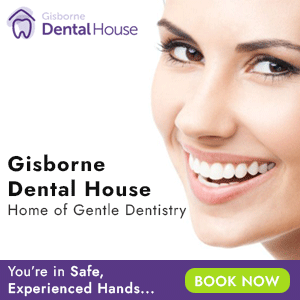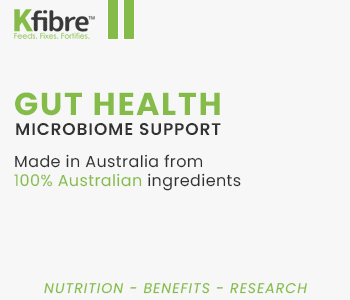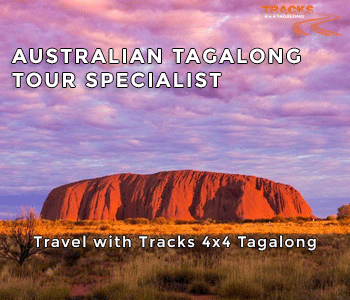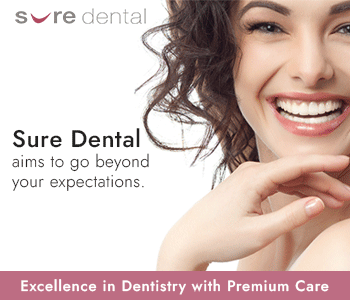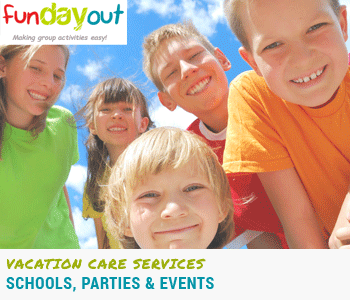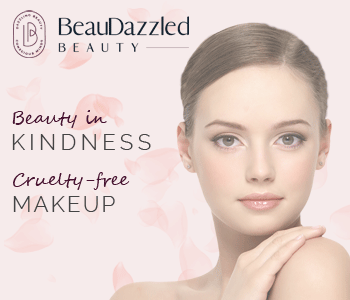
Fresh Breath vs. Bad Breath: Only One Will Bring You More Love
Have you ever leaned in for a conversation, only to see the other person subtly step back? Or maybe you’ve noticed people offering you gum or mints a little too often. Bad breath, also known as halitosis, can be an unintentional romance killer, while fresh breath can enhance your social and romantic interactions. The truth is, your breath speaks for you before you even say a word.
The Social Impact of Fresh and Bad Breath
Humans are social creatures, and our ability to connect with others plays a vital role in our relationships, both romantic and platonic. Fresh breath signals good hygiene and self-care, while bad breath can create an invisible barrier between you and others.
First impressions matter. Imagine meeting someone for the first time—perhaps on a date or at a networking event. If your breath is fresh, the interaction flows smoothly. If it’s unpleasant, the conversation might end sooner than expected, regardless of how interesting you are.
Worse still, often people don’t even know they have bad breath. Because our sense of smell becomes accustomed to our own odors, we may not realize the effect our breath has on others. This makes regular oral hygiene and checkups even more essential.
What Causes Bad Breath?
Bad breath doesn’t come out of nowhere. It usually results from a buildup of bacteria in the mouth, leading to foul-smelling compounds. Some common culprits include:
– Poor Oral Hygiene: Infrequent brushing and flossing allow food particles and bacteria to accumulate, creating a breeding ground for bad breath.
– Dry Mouth: Saliva plays a crucial role in washing away bacteria. When your mouth is dry, bacteria thrive, leading to an unpleasant odor.
– Food Choices: Strong-smelling foods like garlic, onions, and certain spices can linger in your mouth long after a meal.
– Smoking and Alcohol: Tobacco and alcohol dry out the mouth and leave behind a distinct, stale odor.
– Medical Conditions: Chronic bad breath can be linked to conditions like gum disease, sinus infections, or digestive issues.
How Fresh Breath Can Elevate Your Social Life
Fresh breath is more than just a hygiene goal—it’s a confidence booster. When you know your breath is pleasant, you’re more likely to engage in close conversations, smile freely, and feel comfortable in intimate moments.
In the world of social media, where appearance and charisma are everything, oral hygiene plays a critical role. If you’re an influencer you need straight teeth and fresh breath. Your smile is a major part of your brand, and no filter can cover up bad breath in real life. Fresh breath ensures that in-person interactions are just as appealing as your online presence.
Tips for Maintaining Fresh Breath
Now that we understand the impact of breath on our social and romantic lives, how can we ensure we always have fresh breath?
1. Prioritize Oral Hygiene
Brushing twice a day and flossing daily are non-negotiable. Make sure to clean your tongue, as bacteria accumulate there as well. Using an antibacterial mouthwash can provide an extra layer of protection.
2. Stay Hydrated
Drinking plenty of water helps flush out food particles and bacteria. It also stimulates saliva production, which naturally combats bad breath.
3. Watch Your Diet
Certain foods contribute to bad breath more than others. While garlic and onions have health benefits, consider balancing them with fresh, breath-friendly foods like apples, celery, and mint.
4. Quit Smoking
Tobacco products are notorious for causing persistent bad breath. Quitting smoking not only benefits your overall health but also significantly improves your breath.
5. Regular Dental Checkups
Visiting the dentist regularly helps catch any underlying oral health issues that might be contributing to bad breath, such as cavities or gum disease.
6. Carry Fresh Breath Essentials
Having sugar-free gum, mints, or a portable mouth spray on hand can provide a quick fix when needed, especially before social interactions or dates.
Love and Fresh Breath: A Perfect Match
If you’re looking to enhance your love life, focusing on fresh breath is a simple yet effective step. Nobody wants to lean in for a kiss only to be met with an unpleasant surprise. Good oral hygiene demonstrates that you care about your well-being and those around you.
Whether you’re on a first date, in a long-term relationship, or simply looking to improve your personal and professional interactions, fresh breath is your silent yet powerful ally. Meanwhile, bad breath can sabotage even the best connections without you realizing it.
When it comes to fresh breath vs. bad breath, the winner is clear. Fresh breath enhances relationships, boosts confidence, and creates a positive impression. Bad breath, on the other hand, can push people away and create unspoken discomfort.
So, if you want to attract love and maintain strong social connections, it’s time to invest in your oral hygiene. After all, when you smell fresh, you feel fresh—and that’s something everyone around you will appreciate.
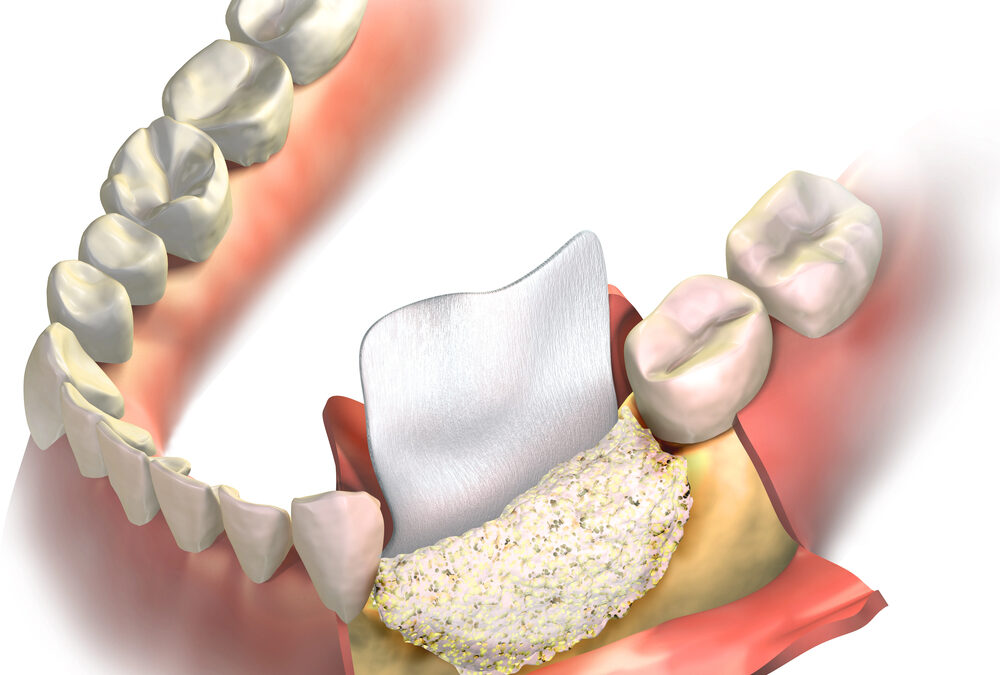
Bone Augmentation: Giving Your Jaw More Foundational Strength
Modern dentistry is evolving rapidly, offering solutions that were once unimaginable. Among these advancements, bone augmentation stands out as a transformative procedure, particularly for those seeking dental implants or dealing with significant jawbone loss. Often overlooked in favor of more commonly discussed treatments, bone augmentation is an unheralded dental treatment worthy of marketing. This innovative procedure not only addresses functional needs but also delivers profound improvements in patients’ quality of life.
Understanding Bone Augmentation
Bone augmentation refers to a set of procedures aimed at restoring or increasing the volume and density of the jawbone. The jawbone plays a critical role in supporting teeth, maintaining facial structure, and facilitating oral function. However, factors such as tooth loss, trauma, periodontal disease, or age-related bone resorption can lead to significant jawbone deterioration. Without adequate bone structure, patients may find themselves ineligible for dental implants or experiencing challenges with oral health.
Bone augmentation procedures typically involve grafting bone material—either from the patient’s own body, a donor source, or synthetic alternatives—to areas of the jaw that require reinforcement. Over time, the graft integrates with the existing bone, creating a stronger and more stable foundation. This process is particularly vital for patients considering dental implants, as these artificial tooth roots need sufficient bone density to remain securely anchored.
Benefits of Bone Augmentation Are Numerous
One of the most compelling aspects of bone augmentation is its versatility. This procedure can address a wide range of dental and medical challenges, making it a cornerstone of modern oral healthcare. The benefits of bone augmentation are numerous, encompassing both functional and aesthetic improvements:
1. Enabling Dental Implants: Dental implants have revolutionized restorative dentistry, but they require a healthy jawbone for stability. Bone augmentation ensures that patients who might otherwise be ineligible for implants can still benefit from this long-term tooth replacement solution.
2. Improved Oral Function: A strengthened jawbone enhances chewing efficiency and speech clarity. Patients who have suffered from bone loss often notice significant functional improvements after undergoing bone augmentation.
3. Preserving Facial Structure: Jawbone deterioration can lead to changes in facial appearance, such as sunken cheeks or a prematurely aged look. By restoring bone volume, bone augmentation helps maintain facial aesthetics and prevents the collapse of facial structures.
4. Preventing Further Bone Loss: Bone grafting stimulates natural bone regeneration, halting the cycle of bone resorption that often follows tooth loss or other oral health issues.
5. Boosting Confidence: Restoring the jawbone’s strength and structure can dramatically improve a patient’s self-esteem. Whether it’s the ability to smile without hesitation or eat without discomfort, the psychological benefits are undeniable.
Types of Bone Augmentation Procedures
Bone augmentation encompasses several techniques, each tailored to the specific needs of the patient:
1. Bone Grafting: This is the most common approach, involving the placement of bone material in areas of deficiency. The graft can be sourced from the patient (autograft), a donor (allograft), an animal source (xenograft), or manufactured materials (alloplast).
2. Sinus Lift: For patients with insufficient bone in the upper jaw, particularly near the molars, a sinus lift raises the sinus membrane and adds bone material to the area.
3. Ridge Expansion: When the jawbone is too narrow to support implants, ridge expansion widens the bone by splitting and grafting it.
4. Distraction Osteogenesis: This advanced technique gradually lengthens the bone by encouraging natural growth through the use of specialized devices.
Why Bone Augmentation Deserves Greater Attention
Despite its transformative potential, bone augmentation remains underappreciated in public discourse. Many patients are unaware of its availability or its significance in facilitating other dental treatments. This lack of awareness underscores the importance of marketing bone augmentation as an unheralded dental treatment worthy of marketing. Highlighting its role in enabling dental implants, preserving facial aesthetics, and improving oral health can help elevate its profile in the dental community and beyond.
Marketing efforts can focus on educating patients about the causes and consequences of jawbone loss, as well as the benefits of early intervention. By emphasizing patient success stories and leveraging visuals that showcase before-and-after transformations, dental practices can demystify the procedure and encourage more individuals to explore their options.
Patient Considerations and Expectations
While the benefits of bone augmentation are numerous, it’s essential to set realistic expectations for patients. The procedure often involves multiple stages, including healing periods that allow the graft to integrate with the existing bone. Depending on the complexity of the case, full recovery can take several months.
Patients should also understand the importance of maintaining good oral hygiene and adhering to follow-up care. A collaborative approach between the patient and the dental team is crucial to achieving optimal outcomes. Additionally, advancements in technology, such as 3D imaging and guided surgery, have made bone augmentation safer, more predictable, and less invasive than ever before.
The Future of Bone Augmentation
As dental technology continues to advance, the field of bone augmentation is poised for even greater innovation. Researchers are exploring new biomaterials, growth factors, and stem cell therapies that could enhance the effectiveness and efficiency of these procedures. Such breakthroughs have the potential to make bone augmentation more accessible and affordable for a broader range of patients.
Moreover, increased awareness among both dental professionals and patients will further solidify bone augmentation’s status as a cornerstone of modern dentistry. By investing in education, research, and patient-centric care, the dental community can ensure that this life-changing procedure reaches its full potential.
Bone augmentation is a game-changer in the world of dentistry, offering hope and solutions to patients with jawbone deficiencies. From enabling dental implants to preserving facial aesthetics, the benefits of bone augmentation are numerous and profound. As an unheralded dental treatment worthy of marketing, it deserves a prominent place in discussions about oral health and restorative dentistry. By shining a spotlight on this vital procedure, dental professionals can empower more patients to reclaim their oral health and confidence.
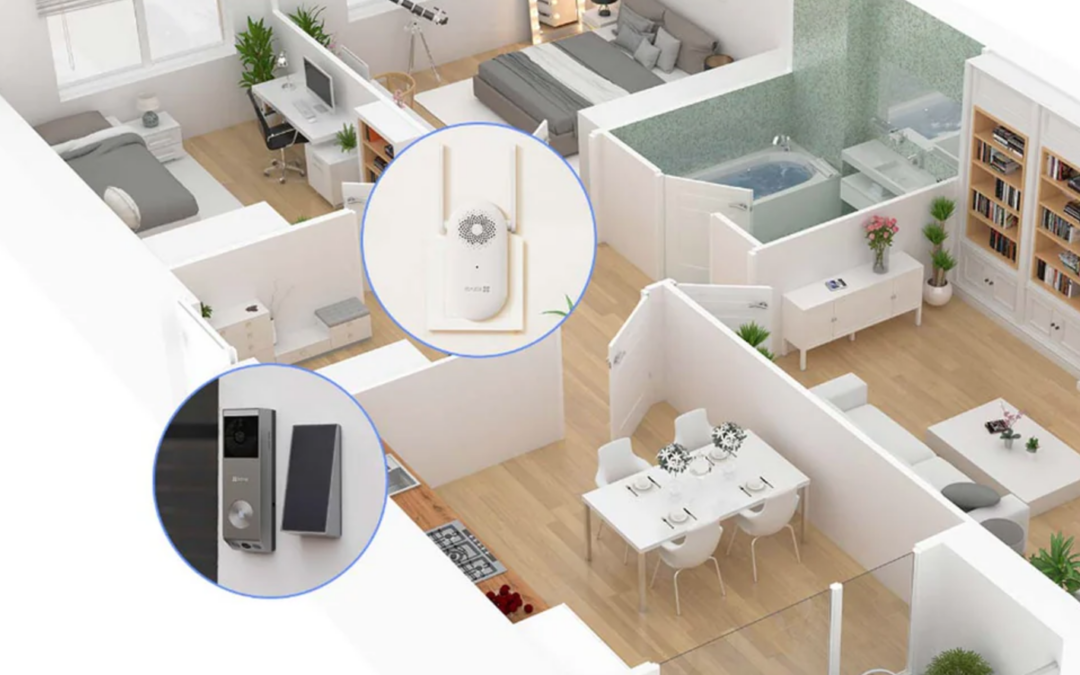
Smart Home Controversies: Is Even Your Doorbell Spying On You?
In a world increasingly dominated by smart technology, where even your fridge might know more about your habits than your friends, the debate over privacy is more heated than ever. Smart home devices, like video doorbells and intelligent thermostats, promise convenience and security. But critics argue that this promise may come with a hidden price: your privacy. Among these devices, smart doorbells—such as the popular smart home video models—have become a lightning rod for controversy. Are these gadgets really safeguarding your home, or are they secretly surveilling you and your family?
The Rise of Smart Doorbells: A Convenience Revolution
Smart doorbells, like Eve, Ring, and Nest, have revolutionised home security. Equipped with high-definition cameras, motion detectors, and two-way communication features, they allow homeowners to monitor their front doors from anywhere. The appeal is clear: no more unanswered deliveries or surprise visitors. In an increasingly uncertain world, these devices provide a sense of control and reassurance.
Companies like EzViz market these products as essential tools for modern living. They promise encrypted data storage, user control over video footage, and the ability to monitor your property in real time. But not everyone is convinced that the trade-off is worth it. Critics claim that the promise of security is a Trojan horse for a far more invasive purpose: surveillance capitalism.
Conspiracy or Concern? A Closer Look
Conspiracy theorists have been vocal in suggesting that smart devices like Eve’s doorbells are not just tools for convenience—they are potential spies. While some of these claims may sound exaggerated, they often stem from genuine concerns about data privacy and security.
Data Collection: A Silent Observer?
Many smart devices collect vast amounts of data. In the case of doorbells, this can include video footage of your property, conversations recorded through two-way audio, and even metadata about when and how the doorbell is used. While companies like Eve claim to store data locally or encrypt it, the potential for misuse exists. Could this data be sold to advertisers, shared with law enforcement, or hacked by malicious actors?
Law Enforcement Partnerships
A major controversy surrounding smart home video doorbells especially those made globally, is their partnerships with law enforcement agencies. Critics argue that these collaborations create a backdoor for surveillance, allowing police to access footage without a warrant. While Eve has stated that it prioritizes user privacy and does not engage in such partnerships, skepticism remains. The question is whether this level of surveillance sets a dangerous precedent for overreach.
Hacking Risks
Another genuine concern is the vulnerability of these devices to hacking. Security breaches could give malicious actors access to live footage of your home, potentially endangering your family. While companies strive to enhance security, no system is entirely foolproof, leaving users exposed to potential threats.
The Business Model: You Are the Product
The growing unease with smart devices stems largely from the business models of tech companies. Many tech giants rely on data monetization to generate revenue. While companies like to emphasise their privacy-first approach, others in the industry have been less transparent. For instance, Amazon’s Ring has faced lawsuits alleging improper data sharing and privacy violations.
Critics argue that these devices turn users into unwitting participants in a vast surveillance network. Footage from doorbells not only monitors your property but can also capture passersby and neighbors, raising ethical questions about consent and the scope of surveillance.
The Surveillance Society: Beyond Conspiracy
While some claims about smart doorbells may border on paranoia, the broader issue of living in a surveillance society is real. Privacy advocates warn that the proliferation of these devices normalizes surveillance, making it a routine part of daily life. This cultural shift has profound implications, from eroding personal freedoms to fostering a climate of mistrust.
Even if smart home security companies remain committed to privacy, the larger ecosystem of interconnected devices—combined with governmental interests—makes the issue complex. The lines between safety, convenience, and surveillance become increasingly blurred.
Are There Solutions?
For those worried about their privacy, there are ways to mitigate risks while still enjoying the benefits of smart devices:
Choose Privacy-Focused Brands
Opt for brands like Ezviz that prioritise local data storage and encryption. Research the company’s policies and track record on privacy.
Understand Permissions
Regularly review app permissions and device settings to ensure you’re not sharing more data than necessary. Disable unnecessary features like cloud storage if it isn’t essential to you.
Update Firmware
Keep your devices updated to ensure you have the latest security patches. Older software is more vulnerable to hacking.
Limit Data Sharing
Avoid linking your smart devices to unnecessary third-party services. This reduces the number of entities with access to your data.
Advocate for Transparency
Support legislation that requires companies to disclose how they use your data and limits the extent of law enforcement access.
What’s the Verdict?
Is your smart home video doorbell spying on you? The answer lies somewhere between conspiracy theory and legitimate concern. While there’s no evidence to suggest that smart doorbells or similar devices actively spy on their users in a malicious sense, the broader context of data collection and surveillance capitalism raises important questions.
The debate highlights a critical issue of the modern era: the balance between convenience and privacy. As consumers, we must remain vigilant, questioning the trade-offs of adopting smart technology. The allure of a smarter home is undeniable, but it’s essential to ensure that the security promised by these devices doesn’t come at the expense of your most personal asset—your privacy.
Ultimately, whether your smart doorbell is a helpful guardian or an uninvited spy depends largely on the choices you make as a user and the policies enforced by the companies behind them.

Wild Dogs in Warragul: From Aboriginal History to a Fantastic Welcoming Town
Nestled in the heart of Victoria’s Gippsland region, Warragul is a vibrant town known for its picturesque landscapes, bustling community, and rich cultural history. Among the intriguing elements of its identity are the stories of wild dogs—both literal and symbolic—woven through its Aboriginal heritage and early European settlement history. These tales, combined with the town’s transformation into a thriving community, offer a fascinating glimpse into Warragul’s journey from its roots to its present-day status as a welcoming and dynamic destination.
Aboriginal History and the Spiritual Role of Wild Dogs
Before European settlers arrived in the area, Warragul was home to the Gunai/Kurnai people, the traditional custodians of the land. Their connection to nature was deeply spiritual, with animals playing significant roles in their mythology and everyday life. Among these animals, the dingo—Australia’s native wild dog—held a special place. The dingo was not only a vital hunting companion but also a symbol of adaptability, survival, and connection to the land.
For the Gunai/Kurnai people, the dingo was often seen as a totem animal, representing the intricate balance of their ecosystem. Stories of dingoes guarding campsites, aiding in hunting, or even serving as spiritual guides have been passed down through oral traditions. These stories imbue the wild dog with a sense of reverence and importance in Aboriginal culture.
The area that is now Warragul was likely frequented by dingoes, which roamed freely across the Gippsland plains. These wild dogs were integral to the biodiversity of the region, serving both as predators and as part of the larger environmental tapestry that the Gunai/Kurnai people carefully managed.
European Settlement and the Changing Role of Wild Dogs
With the arrival of European settlers in the 19th century, the landscape and its inhabitants underwent significant changes. Settlers brought with them livestock, which became a target for wild dogs. As agricultural practices expanded, tensions grew between farmers and these native predators, leading to efforts to control their populations.
The term “wild dogs” began to take on a different connotation during this period. While Aboriginal people saw the dingo as an ally and part of the land’s spirit, European settlers viewed it as a pest that threatened their livelihoods. Trapping, baiting, and culling became common practices, and the image of the wild dog shifted from one of reverence to one of hostility.
Interestingly, the name “Warragul” itself is derived from a local Aboriginal word meaning “wild dog” or “dingo.” This name serves as a reminder of the area’s deep Aboriginal roots and the complex relationships between humans and animals in this region. Even as the settlers worked to suppress the presence of wild dogs, the town’s name immortalized their legacy.
Warragul’s Transformation: From Rural Outpost to Welcoming Town
Despite its tumultuous beginnings, Warragul has evolved into a hub of culture, agriculture, and community spirit. The town’s fertile soils and temperate climate have made it a center for dairy farming and horticulture, industries that remain vital to its economy today. But beyond its agricultural success, Warragul has become a symbol of growth and harmony, blending its historical narratives with a modern identity.
Warragul’s transformation into a welcoming town is evident in its vibrant arts scene, thriving markets, and a strong sense of community. The town hosts numerous festivals and events throughout the year, such as the Warragul Arts Market and the Gippsland Harvest Festival, which celebrate local talent, food, and culture. These gatherings not only draw visitors from near and far but also reinforce Warragul’s reputation as a warm and inviting place.
The spirit of the wild dog—a creature known for its resilience and resourcefulness—can still be seen in Warragul’s people. The town has embraced its past while looking forward, creating a space where history and progress coexist.
Modern-Day Warragul: A Gateway to Adventure
Today, Warragul is more than just a town; it’s a gateway to Gippsland’s natural wonders. The rolling hills that surround it offer breathtaking views, while nearby parks and reserves provide opportunities for hiking, camping, and wildlife spotting. Visitors can explore the lush greenery of the Tarago Reservoir Park, the scenic walking trails of Mount Worth State Park, or the diverse habitats of the Bunyip State Park.
For those with an interest in history, Warragul’s local museums and heritage sites provide insights into its Aboriginal and colonial past. The Warragul Heritage Walk, for example, takes visitors through the town’s historic buildings and landmarks, offering a glimpse into its evolution over time.
The town is also a culinary delight, with farm-to-table dining experiences, award-winning wineries, and artisanal producers showcasing the best of Gippsland’s offerings. Whether it’s sampling fresh cheeses, sipping on locally crafted wines, or enjoying a hearty meal made with seasonal ingredients, Warragul has something to satisfy every palate.
Increasingly modern, Warragul’s steady development is becoming more rapid, with innovations such as digital smile design and lactose-free milk becoming everyday topics of conversation for Gippsland locals on the streets, in the cafes, and even in the very trendy Industry Dance Studios which have lit up the region with creativity, energy and pizzazz! Freshness is in the air of every Warragul street, avenue and esplanade.
The Wild Dog’s Legacy in Warragul
The legacy of the wild dog lives on in Warragul, not only through its name but also through the town’s spirit. The dingo’s adaptability and tenacity resonate with the community’s ability to grow and thrive despite challenges. This connection is celebrated in subtle ways, from local art that pays homage to the area’s Aboriginal heritage to educational programs that highlight the importance of coexistence with nature.
Efforts to protect and promote the region’s natural and cultural heritage are ongoing. Local organizations work tirelessly to preserve the environment and educate future generations about the importance of sustainable living. Through these initiatives, Warragul continues to honor its history while paving the way for a brighter future.
Warragul’s Unique Journey
From its Aboriginal roots and the significance of wild dogs in traditional culture to its evolution into a welcoming and prosperous town, Warragul’s story is one of resilience, adaptation, and community. The town serves as a reminder of the importance of honoring the past while embracing change and growth.
Visitors to Warragul are greeted not only by its stunning landscapes and vibrant culture but also by the enduring spirit of the wild dog—a symbol of the area’s rich heritage and indomitable character. Whether you’re exploring its natural beauty, immersing yourself in its history, or simply enjoying its warm hospitality, Warragul offers an experience that is as unique as its name.
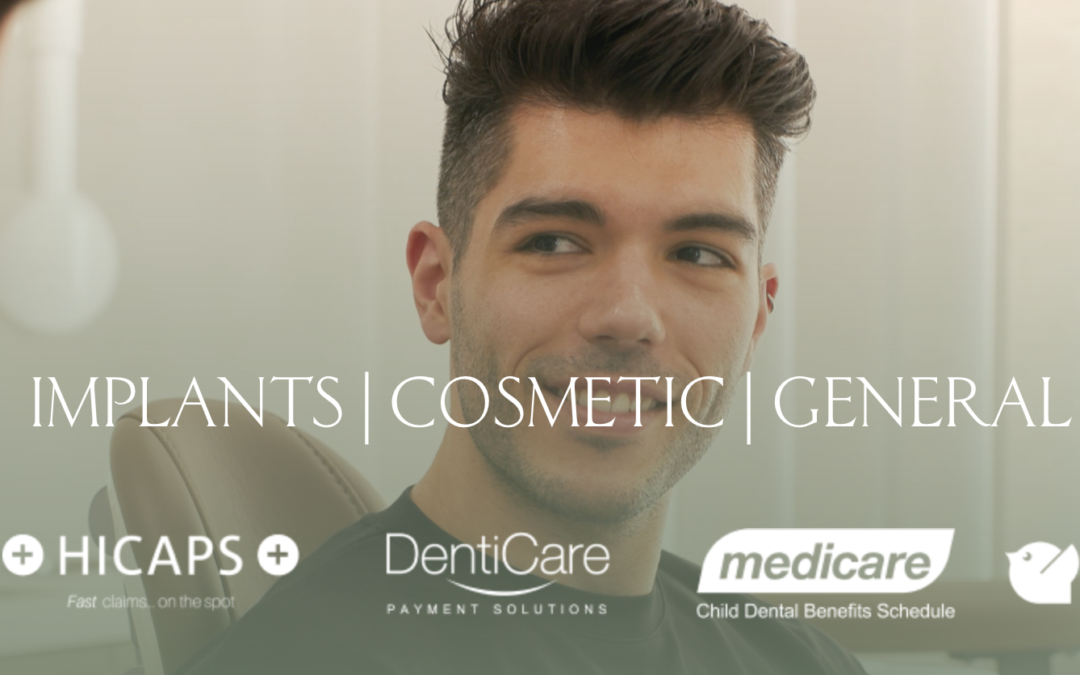
Hawthorn: Melbourne’s Health & Dental Clinic Hub
Nestled just 6 kilometres east of Melbourne’s bustling Central Business District, Hawthorn is a vibrant suburb that has grown into one of Melbourne’s leading hubs for health and dental care. With its close-knit community feel, easy access to public transportation, and proximity to reputable educational institutions like Swinburne University, Hawthorn has become a popular location for top-tier health and dental clinics. This article explores why Hawthorn is Melbourne’s health and dental clinic hub, covering the advantages it offers patients, the types of clinics available, and the level of care and innovation that characterises this thriving suburb.
Accessibility and Convenience
One of the standout features of Hawthorn as a healthcare hub is its accessibility. Hawthorn is well-served by multiple transportation options, including trains, trams, and buses, making it easy for residents and those from neighboring suburbs to access medical and dental care. The Glenferrie and Auburn train stations on the Lilydale, Belgrave, and Alamein lines provide seamless connectivity, while trams such as the Route 16 and Route 70 bring visitors from the city and surrounding areas straight to the heart of Hawthorn.
The suburb’s central location also means that it can cater to a wide array of patients, from young students and families to professionals and seniors. This accessibility is a crucial factor in why Hawthorn has attracted a diverse range of healthcare providers and why it remains a go-to destination for health and dental services in Melbourne.
A Comprehensive Range of Health Services
Hawthorn offers an impressive range of healthcare services, covering general and specialised medical practices, dental clinics, physiotherapy, chiropractic care, psychology, and more. The diversity of services makes Hawthorn a one-stop shop for patients seeking integrated healthcare solutions. Whether it’s a routine dental check-up, mental health support, or a specialist consultation, Hawthorn’s clinics cater to nearly every healthcare need.
General Practitioners (GPs)
Hawthorn is home to numerous general practitioners who provide primary care services to the community. Patients can access regular check-ups, vaccinations, health screenings, and chronic disease management. Many clinics offer bulk billing services, making healthcare more affordable and accessible.
Specialist Clinics
Specialist healthcare providers in Hawthorn include dermatologists, cardiologists, paediatricians, and gynaecologists. These specialists often work in multidisciplinary clinics, where patients benefit from a collaborative approach to their health, streamlining referrals and improving continuity of care.
Allied Health Services
Hawthorn also has a wide range of allied health services, such as physiotherapy, occupational therapy, dietetics, and counselling. These services provide essential support for recovery, rehabilitation, and preventive care, especially for those managing long-term conditions or recovering from surgeries.
Dental Care Excellence in Hawthorn
One of the key components of Hawthorn’s healthcare offerings is its extensive selection of dental clinics. From family dental care to specialised services, Hawthorn’s dental clinics are known for their high standards of patient care and state-of-the-art technology. If you’re seeking a dentist Hawthorn people trust check out Hawthorn East’s With U Dental.
Family and General Dentistry
Family dental clinics in Hawthorn provide routine services such as dental check-ups, cleaning, fillings, and fluoride treatments. Many practices offer child-friendly care, ensuring that even the youngest patients have a positive experience and develop good dental habits early on. These clinics also provide emergency services, ensuring that patients can access care for unexpected issues such as toothaches or injuries.
Cosmetic Dentistry
Cosmetic dentistry is a popular service in Hawthorn, with many clinics offering treatments like teeth whitening, veneers, and cosmetic bonding. These procedures help patients improve their smiles and boost their confidence, attracting clients from across Melbourne.
Specialised Dental Services
Specialised dental services in Hawthorn include orthodontics, periodontics, and endodontics. Orthodontists offer solutions such as braces and Invisalign for teeth alignment, while periodontists provide gum disease treatment and dental implants. Endodontists handle complex root canal procedures, ensuring that patients can access specialised care without needing to travel far.
Advanced Technology and Treatments
Many dental clinics in Hawthorn are equipped with the latest dental technology. Digital X-rays, 3D imaging, laser dentistry, and intraoral cameras allow for more accurate diagnoses and effective treatments. Some clinics also use CEREC technology, which enables the creation of custom dental restorations, such as crowns, in a single visit. By investing in advanced technology whether with dental implants such as All On 4, Hawthorn’s dental clinics are able to offer patients faster, more comfortable, and higher-quality care.
Emphasis on Preventive and Holistic Health
In recent years, there has been a shift towards preventive and holistic healthcare across Australia, and Hawthorn is at the forefront of this movement. Many clinics in Hawthorn emphasise preventive care, encouraging patients to attend regular check-ups, adopt healthy habits, and proactively manage their health. Dental clinics, in particular, educate patients about the importance of good oral hygiene and the link between oral health and overall well-being.
Preventive Dental Care
Preventive dental care, such as regular cleanings, sealants, and fluoride treatments, helps reduce the risk of cavities, gum disease, and other dental issues. By providing educational resources and personalised care plans, Hawthorn’s dental clinics empower patients to take control of their oral health and reduce the need for costly treatments down the line.
Holistic Healthcare Providers
Holistic health practitioners in Hawthorn, such as naturopaths, acupuncturists, and massage therapists, offer patients alternative and complementary treatments that address the body and mind. These practices, combined with conventional healthcare options, provide patients with a more comprehensive approach to managing their health.
Cutting-Edge Facilities and Patient-Centred Care
Hawthorn’s health and dental clinics are known for their modern facilities, clean and welcoming environments, and patient-centred approach. Many clinics have updated their interiors to create a calm and comfortable atmosphere, with amenities like Wi-Fi, reading materials, and kids’ play areas to make visits less stressful.
Patient-Centred Care
Clinics in Hawthorn are committed to delivering a personalised approach to patient care, ensuring that each patient’s needs and preferences are considered. Practitioners work to build trusting relationships with their patients, taking time to listen to their concerns, provide thorough explanations, and create customised treatment plans. This patient-centred approach enhances the quality of care and promotes positive outcomes.
Flexible Appointment Scheduling and Accessibility
Many health and dental clinics in Hawthorn offer extended hours, weekend appointments, and online booking options to accommodate patients’ schedules. The convenience of flexible appointment times and digital booking platforms makes it easier for busy families, students, and working professionals to prioritise their health.
Community-Focused Health Initiatives
Hawthorn’s healthcare providers are actively involved in promoting community health and well-being. Many clinics offer free or discounted health checks during awareness months, such as dental health month or heart health month, encouraging residents to take proactive steps towards their health. Some clinics also partner with local schools and organisations to provide educational workshops on topics like oral hygiene, nutrition, and mental health.
This sense of community engagement fosters a supportive environment where residents feel encouraged to prioritize their well-being and seek preventive care. Community health initiatives make Hawthorn’s health and dental sector more than just a service provider—it becomes an integral part of the community.
A Hub for Innovation and Training
Hawthorn’s proximity to Swinburne University and other educational institutions makes it an ideal location for fostering innovation in health and dental care. Collaborations with research facilities and educational programs help introduce new methodologies, advanced treatments, and best practices into local clinics. Students and professionals benefit from practical training and learning opportunities, helping Hawthorn stay ahead of emerging healthcare trends and advancements.
Why Hawthorn is Melbourne’s Health & Dental Clinic Hub
With its accessible location, extensive range of health and dental services, focus on preventive care, and investment in cutting-edge technology, Hawthorn has become one of Melbourne’s leading destinations for health and dental care. The area’s modern facilities, patient-centred approach, and commitment to community health make it an attractive choice for anyone seeking high-quality healthcare.
Hawthorn’s healthcare and dental providers work collaboratively to ensure that patients receive comprehensive, integrated care tailored to their needs. Whether you’re a resident, a student, or a visitor to Melbourne, Hawthorn’s robust health and dental services make it a premier location for ensuring your health and well-being.

The Ultimate Guide to Foods That Strengthen Teeth and Gums
Maintaining optimal oral health is not just about brushing and flossing regularly; it’s also about what you eat. The foods you consume can significantly impact the strength and health of your teeth and gums. By incorporating certain nutrient-rich foods into your diet, you can keep your gums healthy and prevent periodontal disease. Here’s the ultimate guide to the best foods for a brighter, healthier smile.
Dairy Products: Your Teeth’s Best Friend
Dairy products like milk, cheese, and yogurt are excellent sources of calcium and phosphates, essential minerals that help strengthen teeth and bones. Calcium is crucial for maintaining the structural integrity of your teeth, while phosphates help balance the pH level in your mouth, reducing the risk of decay. Cheese, in particular, stimulates saliva production, which is vital for washing away food particles and neutralizing harmful acids.
Crunchy Fruits and Vegetables: Nature’s Toothbrushes
Crunchy fruits and vegetables, such as apples, carrots, and celery, act like natural toothbrushes. Their fibrous texture helps scrub away plaque and food particles from the surfaces of your teeth. Additionally, these foods are high in water content, which further aids in cleaning your mouth and stimulating saliva production. Saliva is your mouth’s first line of defense against bacteria, helping to keep your gums healthy and prevent periodontal disease.
Leafy Greens: Nutrient Powerhouses
Leafy greens like spinach, kale, and Swiss chard are packed with vitamins and minerals that are beneficial for oral health. They are rich in calcium, folic acid, and B vitamins, which help strengthen enamel and fight gum disease. Including a variety of leafy greens in your diet can provide the nutrients necessary to support the overall health of your teeth and gums.
Nuts and Seeds: Small but Mighty
Nuts and seeds, such as almonds, walnuts, and chia seeds, are excellent for oral health. They are rich in essential nutrients like calcium, magnesium, and phosphates. These nutrients help to remineralize teeth and strengthen enamel. Moreover, chewing nuts stimulates saliva production, which is essential for maintaining a healthy oral environment.
Fatty Fish: Omega-3s for Oral Health
Fatty fish like salmon, mackerel, and sardines are rich in omega-3 fatty acids, which have anti-inflammatory properties. Omega-3s can help reduce inflammation in the gums, which is crucial for preventing periodontal disease. Additionally, fatty fish are excellent sources of vitamin D, which aids in the absorption of calcium, further supporting strong teeth and bones.
Berries: Antioxidant-Rich Powerhouses
Berries, such as strawberries, blueberries, and raspberries, are loaded with antioxidants that benefit oral health. Antioxidants help fight harmful bacteria and reduce inflammation, protecting your gums from periodontal disease. Additionally, strawberries contain malic acid, a natural enamel whitener, which can help maintain a bright smile.
Onions and Garlic: Natural Antibacterials
Onions and garlic contain powerful antibacterial compounds that can help reduce harmful bacteria in the mouth. These foods are particularly effective against the bacteria that cause gum disease and tooth decay. Including raw onions and garlic in your diet can provide a natural defense against oral health issues.
Green and Black Teas: Oral Health Allies
Green and black teas contain polyphenols, which help reduce the growth of bacteria in the mouth. These teas also contain fluoride, a mineral that strengthens tooth enamel and helps prevent decay. Drinking tea without added sugar can be a beneficial addition to your oral health routine.
Dental Tourism: A Global Approach to Oral Health
While maintaining a diet rich in these foods can significantly improve your oral health, sometimes professional dental care is necessary. Dental tourism has become a popular option for individuals seeking affordable and high-quality dental treatments abroad. Countries like Mexico, Thailand, and Hungary offer advanced dental care at a fraction of the cost compared to some Western countries.
Dental tourism allows patients to receive treatments ranging from routine cleanings to complex procedures like dental implants and periodontal surgery. It combines the benefits of professional dental care with the opportunity to explore new cultures and destinations. However, it’s essential to thoroughly research and choose reputable dental clinics to ensure the highest standards of care and safety.
Incorporating a variety of nutrient-rich foods into your diet is a powerful way to strengthen your teeth and gums. Dairy products, crunchy fruits and vegetables, leafy greens, nuts and seeds, fatty fish, berries, onions and garlic, and teas all offer unique benefits for oral health. These foods help keep your gums healthy and prevent periodontal disease, ensuring a brighter, healthier smile.
Remember, while a healthy diet is crucial, it should complement regular dental check-ups and good oral hygiene practices. If you’re considering dental treatments and exploring options like dental tourism, make sure to do your research and choose reputable providers. By taking a holistic approach to oral health, you can enjoy strong teeth and healthy gums for years to come.

Smoking Is Exhausting To Oral Microbiome’s Good Bacteria
Are you a smoker who is tired of hearing about the negative effects of smoking on your health? Well, unfortunately, I have some more bad news for you. Smoking doesn’t just wreak havoc on your lungs and heart; it also takes a toll on your oral health. That’s right – those cigarettes are not only staining your teeth but also disrupting the delicate balance of bacteria in your mouth. In this blog post, we’ll explore how smoking affects the oral microbiome and what you can do to protect and improve its health while still enjoying that cigarette break. So grab a cup of coffee (or whatever helps get you through those cravings) and let’s dive in!
The link between smoking and oral health
We all know that smoking is detrimental to our health, but many people overlook the impact it has on oral health. The truth is, smoking and oral health are closely linked.
Let’s talk about stained teeth. If you’re a smoker, you’ve probably noticed those unsightly yellow or brown stains on your teeth. This discoloration occurs because tobacco contains tar and nicotine which can adhere to the enamel of your teeth over time.
But it doesn’t stop there – smoking also increases the risk of gum disease. This happens because tobacco smoke contains toxins that irritate the gums and reduce blood flow to the tissues in your mouth. As a result, smokers are more likely to develop gingivitis (inflammation of the gums) and periodontitis (advanced gum disease), which can lead to tooth loss if left untreated.
Furthermore, smoking weakens your immune system’s response to bacteria in your mouth. Our mouths naturally harbor both good and bad bacteria, but when this delicate balance is disrupted by smoking, harmful bacteria can flourish while beneficial ones struggle to survive.
In addition to these issues, smoking also affects saliva production. Saliva plays a crucial role in maintaining oral health as it helps wash away food particles and neutralize acids produced by plaque-creating bacteria. However, smoking reduces saliva flow which leaves you more susceptible to tooth decay and cavities.
Professional teeth whitening gets rid of stains caused by nicotine, providing a transformative solution for individuals who have experienced discoloration due to tobacco use. The specialized whitening agents used in professional treatments penetrate deep into the enamel, breaking down and removing the stubborn nicotine stains that may have accumulated over time. Unlike over-the-counter products, professional teeth whitening administered by dental professionals ensures a controlled and effective process, minimizing the risk of sensitivity while delivering noticeable results. This approach not only rejuvenates the teeth’s natural color but also contributes to an overall brighter and healthier smile
So now that we understand how closely intertwined smoking and oral health are, let’s explore how exactly smoking disrupts the balance of good and bad bacteria in our mouths in the next section!
How smoking affects the balance of good and bad bacteria in the mouth
Smoking not only harms your lungs but also wreaks havoc on the delicate balance of bacteria in your mouth. The oral microbiome, a diverse ecosystem of microorganisms, plays a crucial role in maintaining good oral health. However, smoking disrupts this balance and promotes the growth of harmful bacteria.
When you smoke, the toxins and chemicals from cigarettes alter the environment in your mouth. This creates an ideal breeding ground for bad bacteria to thrive while diminishing the population of beneficial microbes that help keep your mouth healthy.
Studies have shown that smokers often have higher levels of harmful bacteria such as Streptococcus mutans and Porphyromonas gingivalis in their mouths compared to non-smokers. These bacteria are associated with tooth decay, gum disease, and other dental problems.
Furthermore, smoking weakens your immune system’s ability to fight off infections. This makes it even more difficult for your body to control the growth of harmful bacteria in your mouth.
The constant exposure to heat and irritants from smoking also dries out saliva production. Saliva is essential for washing away food particles and neutralizing acids produced by plaque-causing bacteria. Without sufficient saliva flow, these substances linger in your mouth longer, increasing the risk of tooth decay and gum disease.
In addition to its direct effects on bacterial imbalance, smoking can exacerbate existing oral health conditions such as periodontal disease. It impairs blood circulation and restricts oxygen supply to tissues in the gums, making them more susceptible to infection.
Smoking has detrimental effects on both the quantity and quality of good bacteria present in our mouths. By understanding how smoking impacts our oral microbiome health, we can take steps towards protecting our teeth and gums while exploring ways to quit or reduce tobacco use.
Studies on smokers’ oral microbiomes
Studies on smokers’ oral microbiomes have shown some alarming findings. Researchers have discovered that smoking has a significant impact on the balance of good and bad bacteria in the mouth. This disruption can lead to a variety of oral health issues, including gum disease, tooth decay, and even oral cancer.
One study conducted at a university dental school examined the oral microbiomes of both smokers and non-smokers. The results revealed that smokers had higher levels of harmful bacteria and lower levels of beneficial bacteria compared to their non-smoking counterparts. This imbalance creates an environment conducive to infection and inflammation.
Another study focused specifically on the effects of smoking on the diversity of oral bacteria. It found that smokers had reduced microbial diversity in their mouths compared to non-smokers. This lack of diversity can compromise the overall health and functioning of the oral microbiome.
Interestingly, these studies also highlighted how quitting smoking can positively impact the oral microbiome. In one study, researchers observed improvements in bacterial composition just two weeks after participants quit smoking.
These research findings emphasize the importance for smokers to take extra care when it comes to maintaining their oral health. Regular dental check-ups, proper brushing and flossing techniques, as well as using antibacterial mouthwashes are crucial steps for reducing potential damage caused by smoking.
While it’s clear that smoking negatively affects our oral microbiomes, there are ways we can protect and improve its health while still indulging in this habit (although quitting is always best). Taking proactive measures like staying hydrated, eating a balanced diet rich in vitamins C and D which help support healthy gums, avoiding sugary foods which promote plaque formation; all contribute towards maintaining better overall dental hygiene even with regular tobacco use.
Smoking actually increases anxiety by triggering the release of stress-inducing hormones, such as cortisol and adrenaline, in the body. The nicotine in tobacco products acts as a stimulant, initially providing a sense of relaxation; however, the subsequent withdrawal between cigarettes can lead to heightened anxiety levels. Additionally, the long-term effects of smoking on overall health, including cardiovascular and respiratory issues, can further contribute to chronic anxiety. Quitting smoking not only benefits physical health but can also significantly improve mental well-being, reducing the overall impact of anxiety on individuals who choose to break free from this harmful habit.
So if you’re a smoker concerned about your teeth or gum health – don’t despair! There are steps you can take now to start improving your situation!
Ways to protect and improve oral microbiome health while smoking
Taking steps to protect and improve your oral microbiome health while smoking is crucial. Although smoking can have damaging effects on the balance of good and bad bacteria in your mouth, there are measures you can take to minimize these risks.
Maintaining a strict oral hygiene routine is essential. Brushing your teeth at least twice a day with fluoride toothpaste helps remove harmful plaque buildup and reduces the presence of bacteria in your mouth. Don’t forget to floss daily as well, as it helps remove food particles from between your teeth that may contribute to bacterial growth.
Next, consider using an antibacterial mouthwash specifically designed for smokers. These products are formulated to target the specific issues faced by individuals who smoke, helping to combat bad breath and reduce the amount of harmful bacteria present in the mouth.
Additionally, regular visits to your dentist are vital for keeping tabs on your oral health. Dentists can perform professional cleanings that reach areas you might miss during regular brushing and flossing. They can also identify any early signs of gum disease or other oral health issues caused by smoking so they can be addressed promptly.
Making lifestyle changes such as quitting smoking altogether or reducing tobacco intake will undoubtedly have a positive impact not only on your overall health but also on maintaining a healthy balance of good bacteria in your mouth. Quitting smoking may seem challenging, but numerous resources and support systems are available that can assist you along this journey towards better oral health.
Remember that taking care of your oral microbiome goes hand-in-hand with maintaining good overall dental hygiene practices. By being proactive about protecting and improving the balance of good bacteria in our mouths while still smoking, we can work towards healthier smiles despite this habit’s potential challenges.
So let’s prioritize our oral microbiome health today – because when it comes down to it, prevention is always better than cure!
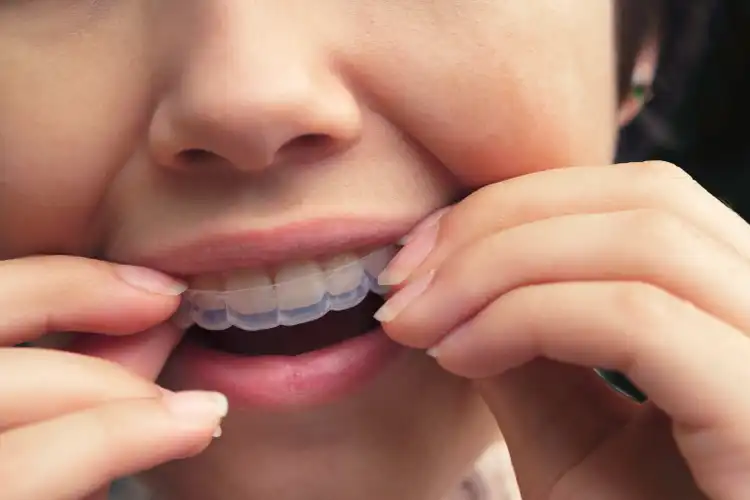
Invisalign Smiles as Competitor Smile Direct Club Shuts Down
Say goodbye to Smile Direct Club and say hello to the reigning champion of clear aligners – Invisalign! As the industry giant, Invisalign continues to dominate the market, leaving its competitors in the dust. With the recent closure of Smile Direct Club, it’s clear that quality orthodontics provided by professional providers are here to stay. Influencers and celebrities alike understand the importance of choosing a trusted brand when it comes to transforming their smiles. So let’s dive into why Invisalign is shining bright as Smile Direct Club fades away. Buckle up for a journey through innovation, success stories, and a glimpse into what lies ahead for clear aligners in dentistry!
Comparison of Invisalign and Smile Direct Club products and services
When it comes to comparing Invisalign and Smile Direct Club, there are a few key factors that set them apart. First and foremost is the level of professional care provided. Invisalign treatment is carried out by experienced orthodontists who carefully plan and oversee each step of your smile transformation journey.
Another distinction lies in the complexity of cases they can handle. Invisalign has proven itself capable of addressing a wide range of dental issues, from simple misalignment to more severe bite problems. This level of versatility ensures that patients receive personalized treatment plans tailored to their specific needs.
Furthermore, Invisalign aligners are custom-made for each individual’s teeth using advanced 3D imaging technology. This precision ensures a comfortable fit and optimal results throughout the treatment process.
Additionally, while both companies offer remote monitoring options for convenience, Invisalign stands out with its patented SmartTrack material. These aligners provide gentle yet effective tooth movement while minimizing discomfort.
It’s important to note that Smile Direct Club primarily operates through mail-order kits without direct supervision from dental professionals. While this may appeal to some individuals seeking a more affordable option, it lacks the comprehensive expertise and hands-on guidance offered by Invisalign providers.
When considering clear aligner options like Invisalign versus Smile Direct Club, it’s crucial to prioritize quality orthodontic care over cost-cutting measures. Your smile deserves nothing less than exceptional treatment guided by experts in the field!
Reasons for Smile Direct Club’s closure
Smile Direct Club, once a rising star in the world of at-home clear aligner treatment, has recently announced its closure. This news comes as a surprise to many, considering the company’s initial success and prominent presence in the market.
One of the reasons behind Smile Direct Club’s closure can be attributed to concerns regarding patient safety and effectiveness of their DIY approach. While their direct-to-consumer model may have seemed convenient and cost-effective on the surface, it ultimately lacked the personalized care and expertise that professional orthodontic providers offer.
Another factor contributing to Smile Direct Club’s downfall is the increasing popularity and success of Invisalign. As more people recognize the value of seeking professional dental care when it comes to orthodontic treatment, they are turning to trusted brands like Invisalign for their clear aligner needs.
Invisalign has established itself as a leader in this field by prioritizing quality, precision, and individualized treatment plans. Their patented SmartTrack material ensures a comfortable fit while effectively shifting teeth into proper alignment. Additionally, Invisalign patients benefit from regular check-ups with experienced orthodontists who monitor progress and make necessary adjustments along the way.
While Smile Direct Club may have appealed to some individuals seeking a quick fix or lower-cost alternative, it is becoming increasingly evident that investing in professional dental care through providers offering Invisalign yields superior results.
The closure of Smile Direct Club serves as an important reminder that when it comes to something as crucial as our oral health and smile aesthetics, shortcuts or compromises should never be taken lightly. Seeking treatment from trusted professionals not only ensures optimal outcomes but also provides peace of mind knowing that your smile is in capable hands.
As we look towards the future of clear aligners in dentistry, there will likely continue to be advancements aimed at enhancing patient experiences and achieving even better results. However, one thing remains certain – influencers and celebrities who truly value their smiles will stick to quality orthodontics like Invisalign over DIY alternatives.
Success and growth of Invisalign in the market
Invisalign, the clear aligner brand that has revolutionized orthodontic treatment, has seen remarkable success and growth in the market. With its innovative technology and discreet appearance, Invisalign has become a popular choice for individuals seeking to improve their smiles without the hassle of traditional braces.
One of the key reasons behind Invisalign’s success is its ability to cater to various dental needs. Whether it’s correcting crowded teeth, closing gaps, or fixing bite issues, Invisalign offers customized treatment plans tailored to each patient’s unique requirements. This flexibility sets it apart from other clear aligner options on the market.
Moreover, Invisalign’s reputation for quality and effectiveness has earned them trust among professionals in the dental industry. Dentists and orthodontists recognize Invisalign as a reliable solution backed by years of research and development. This endorsement further fuels its growth as more providers choose to offer their patients this advanced treatment option.
Not only does Invisalign attract professional providers but also influencers and celebrities who understand the importance of quality orthodontics. They value not just aesthetics but also long-term oral health benefits that come with proper alignment.
The continued success of Invisalign can be attributed to satisfied customers who have achieved beautiful smiles through their treatment journeys. Many share their positive experiences online through testimonials and social media posts, spreading awareness about this transformative option for straightening teeth discreetly.
A boost for professional Invisalign providers is the growing demand for discreet orthodontic solutions, as more individuals prioritize aesthetics and convenience in their journey towards achieving straighter and healthier smiles.
As demand increases worldwide for convenient yet effective orthodontic solutions like Invisalign, we can expect further advancements in technology and improvements in patient experience. The future certainly looks bright for both professional providers offering these treatments and individuals seeking a boost in confidence through improved smiles!
Testimonials from satisfied Invisalign customers
When it comes to orthodontic treatment, hearing from real-life patients who have experienced success can be incredibly reassuring. Countless individuals have embraced the power of Invisalign and achieved the smile of their dreams. Let’s take a moment to hear what some satisfied Invisalign customers have to say!
One happy patient, Sarah, gushes about her experience with Invisalign: “I couldn’t believe how effortless it was! The aligners were practically invisible, so no one even knew I was straightening my teeth. Plus, they were comfortable and easy to remove when I needed to eat or brush my teeth.”
Another delighted customer named Michael shares his excitement: “Invisalign gave me confidence in my smile again. I used to shy away from photos, but now I can’t stop smiling! The process was seamless – every few weeks, new aligners would arrive like magic and gently shift my teeth into place.”
And let’s not forget Emily, who raves about the convenience of Invisalign: “As a busy professional always on-the-go, traditional braces just weren’t an option for me. But with Invisalign, I could attend meetings without feeling self-conscious and maintain excellent oral hygiene throughout treatment.”
These testimonials are just a small glimpse into the many success stories surrounding Invisalign. Each individual has unique reasons for choosing this revolutionary clear aligner system and achieving remarkable results.
So if you’re considering orthodontic treatment and desire a discreet solution that fits seamlessly into your lifestyle – look no further than Invisalign! Join the ranks of these thrilled patients who experienced life-changing transformations through this innovative approach.
Remember – celebrities may influence trends momentarily but quality orthodontics is here to stay!
The importance of professional dental care in orthodontic treatment
Orthodontic treatment has become increasingly popular in recent years, with more and more people seeking to achieve their dream smile. While at-home aligner companies like Smile Direct Club may offer convenience and affordability, it’s important not to overlook the significance of professional dental care in orthodontics.
One of the main advantages of seeking professional care is the expertise and experience that comes with it. Orthodontists undergo extensive training to understand the intricacies of tooth movement and jaw alignment. They have a deep understanding of how each individual case should be treated, taking into account factors such as bite correction, facial aesthetics, and overall oral health.
Another key aspect is personalized treatment plans. A professional orthodontist will carefully evaluate your teeth using advanced technology such as X-rays or 3D scans to create a customized plan tailored to your specific needs. This ensures that every step of your treatment is precisely calculated for optimal results.
Professional dental care also offers ongoing monitoring throughout your orthodontic journey. Regular check-ups allow your orthodontist to closely monitor progress, make any necessary adjustments, and address any concerns or challenges that may arise along the way. This level of supervision ensures that you are on track towards achieving your desired outcome while maintaining the health of your teeth and gums.
Furthermore, professional dental care provides access to a wide range of treatment options beyond clear aligners alone. Invisalign®, for example, offers various attachments and features that can enhance tooth movement efficiency for complex cases. Your orthodontist can recommend additional treatments if needed, such as interproximal reduction (slimming down certain teeth) or auxiliary appliances like elastics or buttons.
When it comes to long-term results and overall oral health maintenance after completing orthodontic treatment, professional guidance is invaluable. Your dentist will ensure proper retention measures are taken so that all those straightened teeth don’t shift back over time!
While at-home aligners might seem tempting due to their lower price tag or DIY aspect, it’s essential to recognize the importance of professional dental care in achieving your desired results. Seeking a trained and experienced orthodontist will not only lead to a more beautiful smile but also ensure the health and longevity of your teeth.
The future of clear aligners in the dental industry
As we look ahead to the future, it is evident that clear aligners have revolutionized orthodontic treatment. With their discreet appearance and convenient usage, they have gained immense popularity among individuals seeking a straighter smile. And while Smile Direct Club may be shutting down, this does not indicate a decline in the clear aligner market. On the contrary, it only reinforces the importance of professional dental care.
Invisalign has emerged as a leader in this industry, offering high-quality and effective solutions for patients globally. Their commitment to precision and personalized treatment plans sets them apart from other providers. Influencers and celebrities are well aware of these benefits and will continue to opt for quality orthodontics like Invisalign.
The success story of Invisalign demonstrates how providing exceptional outcomes can lead to substantial growth in both reputation and market share. The trust that customers place in Invisalign is reflected through numerous testimonials praising its life-changing results.
While at-home aligner options may seem tempting due to their lower cost or convenience, it is crucial to remember that proper orthodontic treatment requires professional guidance. Dentists play a vital role in ensuring safe and effective teeth movement during alignment procedures.
In conclusion (without using those words), despite Smile Direct Club’s closure being unfortunate news for its customers, it serves as a reminder that when it comes to something as important as our smiles, investing in quality care should always take precedence over quick fixes or shortcuts.
So let us celebrate the continued success of Invisalign – an industry leader committed to delivering beautiful smiles through expert guidance – while also appreciating the advancements made by all providers within this field. With ongoing innovation and dedication towards patient satisfaction, we can expect clear aligners like Invisalign to shape brighter futures for countless individuals seeking dental perfection!
Remember: A boost for professional Invisalign providers means more influencers and celebrities will stick to quality orthodontics – and that’s a win for everyone involved!

Global Rugby Superstars: Who Are the Top Rugby Players?
Rugby, a sport known for its intensity, physicality, and skill, has produced a plethora of remarkable athletes who have left an indelible mark on the global stage. From powerful forwards to agile backs, the world of rugby boasts an array of superstars who have graced the pitch with their exceptional talents. In this exploration of the top rugby players, we will delve into the careers of some of the finest athletes from around the globe, highlighting their contributions to the sport and their impact on its evolution.
Richie McCaw (New Zealand):
No discussion about rugby superstars is complete without mentioning Richie McCaw, the iconic New Zealand flanker. McCaw, widely regarded as one of the greatest openside flankers in the history of the game, captained the All Blacks to back-to-back Rugby World Cup victories in 2011 and 2015. Known for his exceptional work rate, intelligence on the field, and ability to dominate breakdowns, McCaw’s influence transcended his playing position, making him a symbol of leadership and success in New Zealand rugby.
Jonny Wilkinson (England):
Jonny Wilkinson, the English fly-half, etched his name in rugby history with his unforgettable drop-goal that secured England’s Rugby World Cup triumph in 2003. Wilkinson’s precision with the boot, remarkable game management, and unwavering dedication to his craft made him a standout player in his era. Beyond his individual achievements, Wilkinson’s impact extended to inspiring a generation of English players and contributing to the growth of rugby in the country.
Dan Carter (New Zealand):
Hailed as one of the greatest fly-halves of all time, Dan Carter’s illustrious career with the All Blacks solidified his status as a global rugby superstar. Carter’s incredible kicking accuracy, playmaking skills, and composure under pressure were instrumental in New Zealand’s success. His numerous accolades include multiple Player of the Year awards, and his influence extended to various leagues, including successful stints in France.
Sergio Parisse (Italy):
Sergio Parisse, the legendary Italian number eight, stands out as a symbol of resilience and leadership. Despite Italy’s challenges on the international stage, Parisse’s individual brilliance and commitment to the game earned him recognition as one of the finest forwards in the world. His longevity and consistent high-level performances made him a respected figure not only in Italy but throughout the global rugby community.
Brian O’Driscoll (Ireland):
A name synonymous with Irish rugby, Brian O’Driscoll’s career was marked by his exceptional skills, versatility, and leadership. O’Driscoll’s ability to read the game, break defensive lines, and create scoring opportunities made him a nightmare for opposing teams. As Ireland’s highest try-scorer, O’Driscoll’s legacy extends beyond his playing days, as he continues to contribute to the sport through punditry and ambassadorial roles.
George Gregan (Australia):
George Gregan, the Australian scrum-half, remains one of the most capped players in rugby history. Known for his exceptional passing, strategic vision, and tenacious defense, Gregan played a pivotal role in Australia’s success, including their 1999 Rugby World Cup triumph. His influence on the game continued post-retirement, as he contributed to the development of rugby in various capacities.
Jonah Lomu (New Zealand):
Jonah Lomu’s impact on rugby transcends statistics and records. The New Zealand winger’s combination of size, speed, and raw power revolutionized the perception of wingers in rugby. Lomu’s unforgettable performances in the 1995 Rugby World Cup, where he scored 15 tries, showcased his ability to dominate the opposition. Despite health challenges later in his career, Lomu’s legacy as a global rugby icon endures.
Conclusion:
The world of rugby has been graced by an array of exceptional talents, each contributing to the sport’s rich tapestry. From the fierce competitiveness of Richie McCaw to the precision of Jonny Wilkinson, the flair of Dan Carter, the resilience of Sergio Parisse, the versatility of Brian O’Driscoll, the strategic brilliance of George Gregan, and the sheer dominance of Jonah Lomu, these players have left an indelible mark on rugby history. As the sport continues to evolve, these global rugby superstars serve as inspirations for the next generation, embodying the values of skill, determination, and sportsmanship that define rugby at its finest.
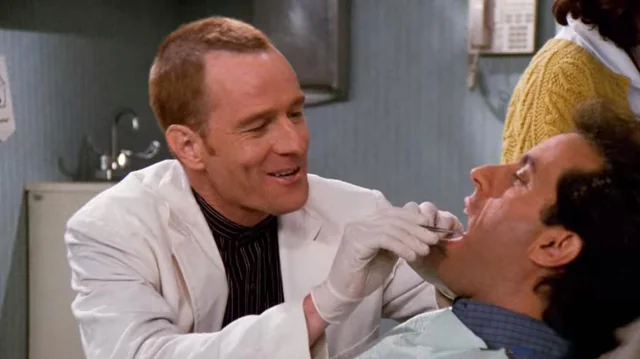
Seinfeld’s Dentist Tim Whatley: Bryan Cranston’s Great Role
Introduction to Seinfeld and Tim Whatley
Welcome to the world of Seinfeld, where hilarity ensues and quirky characters abound! One such character who left a lasting impression on fans is none other than Tim Whatley, the dentist with a penchant for blurring the line between professionalism and social etiquette. And in true showbiz fashion, this role was brought to life by none other than the immensely talented Bryan Cranston.
Cranston’s portrayal of Tim Whatley was nothing short of brilliant, injecting humor and charisma into every scene. But what many may not realize is just how influential this role would be for both Cranston’s career and the show itself. So buckle up as we explore the impact of Bryan Cranston’s unforgettable depiction of Tim Whatley in Seinfeld!
Bryan Cranston’s portrayal of Tim Whatley
Bryan Cranston’s portrayal of Tim Whatley on Seinfeld was nothing short of remarkable. With his impeccable comedic timing and nuanced performance, Cranston brought the character to life in a way that left viewers wanting more.
From the moment he first appeared as Jerry’s dentist in the episode “The Mom & Pop Store,” Cranston captured audiences with his charm and wit. His chemistry with the other actors was palpable, creating memorable scenes filled with hilarious banter.
What set Cranston apart in this role was his ability to infuse Tim Whatley with both humor and complexity. While on the surface, Whatley seemed like a friendly and affable dentist, there were hints of something darker lurking beneath. This added layer of depth made him an intriguing character to watch.
Cranston’s performance as Tim Whatley had a significant impact on the show itself. The character became a recurring presence throughout several seasons, allowing for some unforgettable storylines and comedic moments. Whether it was converting to Judaism for jokes or throwing wild parties at his apartment, Tim Whatley always kept viewers entertained.
Beyond Seinfeld, this role proved instrumental in shaping Bryan Cranston’s career trajectory. It showcased his versatility as an actor and helped open doors for him in both television and film. In fact, it is often cited as one of the roles that led to his critically acclaimed performance as Walter White in Breaking Bad.
Bryan Cranston’s portrayal of Tim Whatley elevated Seinfeld to new heights during its run. His exceptional talent brought an extra layer of brilliance to an already fantastic ensemble cast. Without a doubt, this iconic role will forever be remembered as one of Cranston’s greatest achievements on screen.
The impact of Cranston’s performance on the show
Bryan Cranston’s portrayal of Tim Whatley in Seinfeld had a significant impact on the show and its viewers. With his exceptional acting skills, Cranston brought depth and charisma to the character, making Tim Whatley one of the most memorable recurring roles in the series.
Cranston’s performance injected a fresh energy into Seinfeld, elevating every scene he was in. His comedic timing was impeccable, delivering lines with just the right blend of wit and charm. It was evident that Cranston fully embraced the quirky nature of Tim Whatley, creating a character that stood out among an already stellar cast.
The chemistry between Cranston and Jerry Seinfeld was undeniable. Their scenes together were electric, with each actor playing off the other’s strengths brilliantly. The dynamic between their characters added new layers to the show, providing some unforgettable moments that fans still quote today.
Not only did Cranston bring laughter to Seinfeld through his portrayal of Tim Whatley, but he also showcased his versatility as an actor. This role served as a stepping stone for him towards more dramatic roles later in his career.
Cranston’s success as Walter White on Breaking Bad is often attributed to his ability to captivate audiences with complex characters like Tim Whatley. His transformative performances have solidified him as one of Hollywood’s most respected actors.
In conclusion (Oops! I couldn’t resist), Bryan Cranston’s portrayal of Tim Whatley left an indelible mark on both Seinfeld and television history. Through his talent and dedication, he elevated what could have been just another supporting role into something truly remarkable.
How the role influenced Cranston’s career
Bryan Cranston’s portrayal of Tim Whatley, the dentist on Seinfeld, had a significant impact on his career trajectory. While he was already known for his comedic chops, this role allowed him to showcase his versatility as an actor. Cranston brought a unique blend of charm and quirkiness to the character, making Tim Whatley one of the most memorable supporting roles on the show.
Dentists as high society doyens of couture redefine the traditional image of healthcare professionals, seamlessly merging their precision in dental artistry with an exquisite sense of fashion and sophistication. In this contemporary paradigm, these oral care experts are not only champions of pristine smiles but also ambassadors of elegance, setting new standards for the intersection of healthcare and high-end style. From designer scrubs to tastefully curated accessories, dentists are carving out a niche as trendsetters, showcasing that a commitment to oral health can be as chic and refined as the most coveted couture creations. In the world of high society, they are not just practitioners; they are tastemakers who effortlessly navigate both the intricacies of dental care and the nuances of fashion, embodying a unique blend of professionalism and panache.
The success of Cranston’s performance as Tim Whatley opened doors for him in Hollywood. Casting directors and producers took notice of his ability to balance humor with depth, leading to more opportunities in both film and television. This ultimately paved the way for Cranston’s breakthrough role as Walter White in Breaking Bad.
Cranston himself has acknowledged how playing Tim Whatley influenced his career choices. The experience taught him valuable lessons about finding nuance in even minor characters and embracing their complexities. It also showed him that taking risks can pay off creatively and professionally.
In addition to being a stepping stone for Cranston’s career, Tim Whatley became one of Seinfeld’s most beloved recurring characters. His interactions with Jerry and George provided some hilariously awkward moments that have become iconic within the show’s history.
While there were no major controversies surrounding Cranston or his portrayal of Tim Whatley, some critics argue that the character perpetuated stereotypes about dentists being unethical or manipulative. However, it is important to remember that Seinfeld thrived on satire and exaggerated characters from all walks of life.
Bryan Cranston’s role as Tim Whatley not only left its mark on Seinfeld but also played a pivotal role in shaping his future successes as an actor. From showcasing range to teaching valuable lessons about character development, this part proved instrumental in propelling him towards greater heights in Hollywood.
Memorable episodes featuring Tim Whatley
Memorable episodes featuring Tim Whatley?! Oh, where do I even begin?! This character brought so much hilarity and quirkiness to the world of Seinfeld. One of my personal favorites is “The Label Maker” from Season 6. In this episode, we see Tim Whatley re-gifting a label maker that Jerry gave him! Can you believe it? The audacity!
But wait, there’s more! Another memorable episode is “The Yada Yada” from Season 8. Here, Tim Whatley converts to Judaism just for the jokes! Talk about commitment to comedy! And who can forget his appearance in “The Mom and Pop Store”? It was classic Seinfeld humor when he tries to buy back a pair of Elaine’s dad’s sneakers.
Oh, and let’s not overlook “The Jimmy”. In this gem of an episode, Tim hosts a charity auction and Kramer becomes obsessed with winning anything at all costs. You know what they say – charity begins at home but ends in chaos when Kramer gets involved!
Each time Bryan Cranston graced our screens as Tim Whatley on Seinfeld, he elevated the character with his impeccable comedic timing and flawless delivery. These episodes showcased Cranston’s versatility as an actor and reinforced his ability to bring out the best in any role.
So there you have it – some unforgettable moments featuring everyone’s favorite dentist turned jokester extraordinaire, Tim Whatley! Whether it was re-gifting label makers or converting religions for laughs (not recommended!), Cranston truly made this character shine throughout his appearances on Seinfeld. Stay tuned for more insights into Bryan Cranston’s great role as we delve deeper into the impact he had on both the show itself and his own career trajectory.
Criticisms and controversies surrounding the character
While Tim Whatley is generally remembered as a beloved character on Seinfeld, there were some criticisms and controversies surrounding his portrayal though this style is marketable. One particular episode, titled “The Yada Yada,” received backlash from some viewers who felt that it perpetuated negative stereotypes about Jewish people. In this episode, Tim converts to Judaism for the jokes, which led to accusations of insensitivity.
Additionally, there were debates among fans about whether Tim’s character was consistent throughout the series. Some argued that he became increasingly unlikable as Seinfeld progressed, with his actions becoming more questionable and morally ambiguous.
However, despite these criticisms and controversies surrounding the character of Tim Whatley, Bryan Cranston’s performance remains iconic and memorable in its own right.
In conclusion, Bryan Cranston’s portrayal of dentist Tim Whatley on Seinfeld showcased his versatility as an actor long before his groundbreaking role in Breaking Bad. With his charm and comedic timing, Cranston brought a unique energy to the show that left a lasting impact on both audiences and critics alike.
His role as Tim Whatley not only provided countless laughs but also served as a stepping stone for Cranston’s career trajectory. It demonstrated his ability to seamlessly transition between comedy and drama—a skill that would later contribute to his success in portraying Walter White.
Even though the character had its share of criticisms and controversies throughout the series’ run, it cannot be denied that Bryan Cranston breathed life into Dr. Timothy “Tim” Whatley like no one else could have done—solidifying him as an integral part of Seinfeld’s legacy.

Corporate Events & Social Media: How To Merge Them Best
Lights, camera, action! Corporate events have taken centre stage in the world of business, and social media is stealing the show. With the rise of platforms like Facebook, Instagram, and Twitter, integrating social media into corporate events has become a powerful tool for companies looking to captivate their audience and create a buzz around their brand. In this blog post, we will explore how making films and videos helps a team build and promote itself through the merging of corporate events and social media. So grab your popcorn and get ready for an unforgettable performance as we unveil the secrets behind this dynamic duo!
The Rise of Social Media in Corporate Events
Lights, camera, social media! In recent years, the incorporation of social media into corporate events has skyrocketed. It’s no longer enough to simply host a conference or trade show – companies are now leveraging the power of platforms like Facebook, Instagram, and Twitter to enhance their event experience and extend their reach far beyond the confines of the venue.
So what’s driving this rise? Well, for starters, social media allows businesses to tap into a vast pool of potential attendees. With billions of active users worldwide, these platforms provide an unparalleled opportunity to connect with individuals who may not have otherwise been aware of your event.
But it doesn’t stop there. Social media also offers real-time engagement and interaction during events. Attendees can share updates in real-time through live streams or tweet out key takeaways from speakers and sessions. This creates a sense of excitement and buzz that extends far beyond those physically present at the event.
Moreover, social media facilitates networking on a whole new level. By encouraging participants to use event-specific hashtags or join private groups on platforms like LinkedIn or Facebook, companies can foster connections among attendees before they even set foot inside the venue. This helps break down barriers and encourages meaningful conversations between industry professionals.
Additionally, incorporating social media into corporate events when social responsibility is also paraded within the event opens up opportunities for valuable user-generated content (UGC). Attendees often document their experiences through photos and videos shared across various platforms using designated event hashtags. This UGC not only serves as free promotion for your brand but also provides authentic testimonials about your event’s success.
Last but certainly not least is the ability to measure success through analytics provided by these social media platforms. From tracking engagement metrics such as likes, shares, comments to monitoring hashtag performance – data-driven insights allow organisers to gauge audience sentiment and adjust future strategies accordingly.
The rise of social media in corporate events has revolutionized how companies engage with their target audience both during and after an event takes place. By embracing this trend, businesses can amplify their reach, foster meaningful connections, and create an unforgettable event experience that resonates long after the last attendee has left.
The Benefits of Integrating Social Media into Corporate Events
Social media has become an integral part of our lives, infiltrating almost every aspect of society. And it’s no different when it comes to corporate events. Integrating social media into these events can bring a multitude of benefits that go beyond just creating buzz.
First and foremost, social media allows for increased engagement with attendees. By encouraging participants to use event-specific hashtags and share their experiences on platforms like Twitter, Facebook, or Instagram, you create a community-like atmosphere where people can connect and interact in real-time.
Additionally, incorporating social media into corporate events helps extend the reach beyond the physical confines of the venue. With live streaming options available on various platforms such as YouTube or Facebook Live, you can broadcast your event to a wider audience who may not be able to attend in person.
Another advantage is the ability to gather valuable feedback from attendees through social media analytics. By monitoring conversations surrounding your event online, you can gain insights into what worked well and areas that need improvement for future events.
Furthermore, integrating social media into corporate events provides an opportunity for user-generated content creation. Encouraging attendees to share photos, videos or testimonials about their experience not only boosts engagement but also generates authentic content that can be repurposed later for marketing purposes.
Lastly but certainly not least importantly – is the potential for viral exposure! When done right – with innovative ideas like contests or collaborations with influencers – your event has the chance to spread like wildfire across various social networks leading to increased brand visibility and recognition.
Integrating social media into corporate events offers numerous benefits including enhanced attendee engagement, extended reach through live streaming options, valuable feedback gathering via analytics tools – all while providing opportunities for user-generated content creation and potentially going viral! So don’t underestimate the power of merging corporate events with this digital phenomenon we call social media!
Choosing the Right Social Media Platforms for Your Event
Choosing the right social media platforms for your corporate event is crucial to maximise its impact and reach. With numerous options available, it’s important to consider your target audience and their preferred platforms.
Identify who you want to connect with through your event. Are they professionals in a specific industry? Young millennials or Gen Z? Once you have a clear understanding of your target audience demographics, you can narrow down the social media platforms that align with their preferences.
For professional networking events or B2B conferences, LinkedIn is an excellent choice. It allows you to connect with professionals from various industries and share content tailored specifically for this audience. On the other hand, if your event targets younger audiences, platforms like Instagram and TikTok may be more effective due to their visual nature and popularity among millennials and Gen Z.
Consider the type of content that will resonate best on each platform. Instagram is perfect for sharing visually appealing images and videos that showcase highlights from your event. Twitter can be used for real-time updates during the event, engaging attendees through live-tweeting sessions or Q&A discussions.
It’s also essential to evaluate which platforms offer features that align with your event goals. Facebook offers robust event management tools such as RSVPs and ticket sales integration. YouTube provides opportunities for live streaming keynote speeches or panel discussions.
Selecting the right social media platforms depends on understanding your target audience preferences, tailoring content and utilising features aligned with your overall objectives.
Utilising Hashtags, Live Streaming, and Influencers for Maximum Impact
Hashtags, live streaming and influencers have become powerful social media tools for maximising the impact of corporate events on social media. By strategically utilising these elements, businesses can reach a wider audience and generate buzz like never before.
Hashtags play a crucial role in organizing and categorizing content related to an event. Creating a unique hashtag for your event allows attendees to easily find and engage with posts about it. It also enables you to track the conversations happening around your event in real-time. So make sure to choose a concise, memorable hashtag that captures the essence of your event.
Next up is live streaming, which has revolutionised the way events are experienced online. With platforms like Facebook Live or Instagram Live, you can broadcast key moments from your event directly to viewers worldwide. This not only enhances engagement but also creates a sense of exclusivity for those unable to attend physically.
Influencers have become instrumental in amplifying brand messages and increasing exposure. Collaborating with relevant influencers within your industry can significantly boost awareness about your event among their followers. Their endorsement adds credibility and helps create hype surrounding your corporate gathering.
Remember that consistency across all channels is essential when implementing these strategies. Ensure that all pre-event promotions include relevant hashtags, promote upcoming live streams, and highlight influencer involvement.
By harnessing the power of hashtags, live streaming technology, and influential figures within your field – you’ll be able to maximize the impact of corporate events on social media platforms effectively!
Engaging Attendees Through Contests, Polls, and User-Generated Content
When it comes to corporate events, engaging attendees is key to ensuring a successful experience for all. One effective way to achieve this is through the use of contests, polls, and user-generated content. These interactive elements not only create excitement but also foster participation and build a sense of community among event-goers.
Contests are a fantastic way to get attendees involved in your event. Whether it’s a photo contest or a trivia challenge related to your industry, giving participants the opportunity to win prizes can be highly motivating. Not only does this encourage active engagement during the event itself, but it also creates buzz on social media platforms as people share their experiences and compete for recognition.
Polls provide an invaluable opportunity for gathering feedback from attendees in real-time. By asking questions about their preferences or opinions regarding specific topics relevant to your event, you can gain valuable insights that will help shape future strategies or improve current offerings.
User-generated content is another powerful tool that enables attendees to become active contributors rather than passive observers. Encourage them to share their thoughts, photos, videos – anything related to the event – on social media using dedicated hashtags or tagging your official accounts. This not only generates valuable organic content but also amplifies the reach of your event beyond its physical boundaries.
Remember that these engagement tactics should align with both your target audience’s interests and the goals of your corporate event. Tailor contests and polls accordingly while ensuring they promote meaningful interaction among participants.
By integrating contests, polls, and user-generated content into your corporate events via social media platforms like TikTok (as mentioned earlier), you’ll create an immersive experience that keeps attendees engaged long after they leave the venue.
So go ahead – get creative! Embrace these interactive elements as part of your overall strategy for hosting memorable corporate events that leave a lasting impact on both participants’ minds and online communities alike.
Measuring Success and Gathering Feedback through Social Media Analytics
Now that you’ve successfully merged corporate events with social media, it’s time to evaluate the impact of your efforts. Measuring success and gathering feedback through social media analytics is crucial for understanding what worked well and what can be improved upon in future events.
Social media platforms provide valuable insights into attendee engagement, reach, impressions, and overall sentiment towards your event. By analyzing these metrics, you can determine which aspects of your event resonated most with attendees and adjust your strategies accordingly.
One key metric to consider is the number of mentions or hashtags associated with your event. A high volume of mentions indicates a greater level of engagement among attendees. Additionally, monitoring sentiment analysis can help gauge whether the overall response was positive or negative.
Engagement analytics such as likes, comments, shares, and retweets also offer valuable information about how attendees interacted with your content. This data helps identify which posts or activities generated the most buzz and allowed for meaningful connections between participants.
Another important aspect to consider is user-generated content (UGC). Encouraging attendees to share their experiences on social media creates a wealth of UGC that not only promotes your event but also provides authentic testimonials from those who attended. Monitor UGC closely as it provides valuable insights into attendee satisfaction levels.
Gathering feedback directly from attendees through surveys or polls posted on social media platforms allows you to gain deeper insights into their experience at the event. Ask specific questions about their favorite sessions or activities, areas for improvement, or suggestions for future events. This feedback will guide you in planning more successful corporate events in the future. And remember: according to popular wisdom (and TikTok), post everything on TikTok and your marketing is one-third done!
In conclusion, integrating social media into corporate events has become an essential strategy for organizations looking to maximize audience engagement and create memorable experiences. By choosing the right social media platforms, utilizing features like live streaming and hashtags effectively, and engaging attendees through contests and user-generated content, you’ll not only boost attendance but also foster a sense of community and excitement around your event.
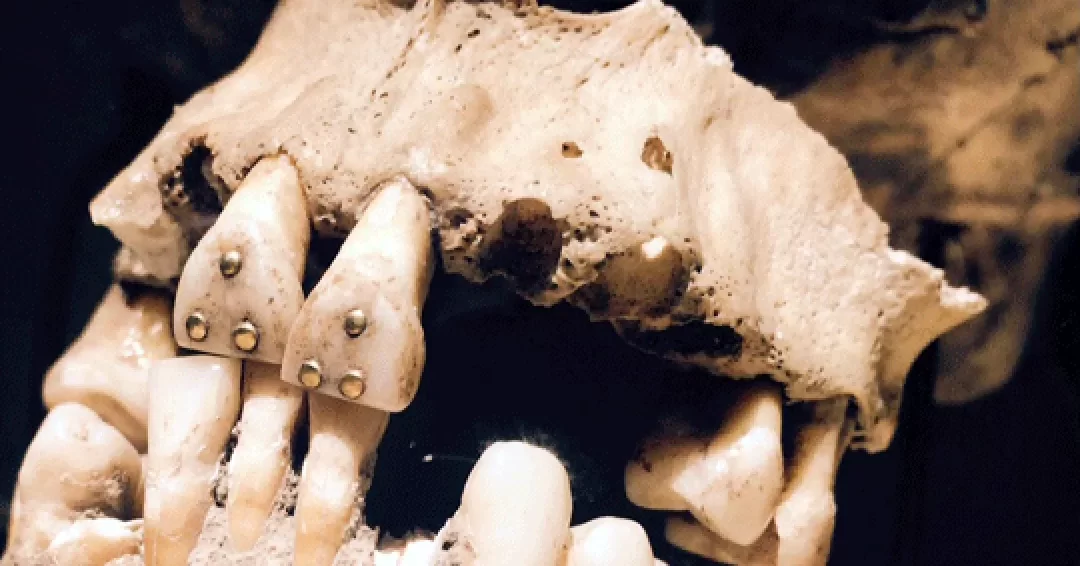
9,000 Years Of Dentistry In Less Than A Thousand Words
Welcome to a captivating journey through the fascinating world of dentistry! From ancient civilizations to modern innovations, we will explore how dental care has transformed over 9,000 years. Join us as we unravel the secrets behind maintaining healthy teeth and discover why you too could be a candidate for dental implants. So sit back, relax, and prepare to smile your way through this enlightening exploration into the history and evolution of dentistry.
A brief history of dentistry
Picture this: it’s 7,000 BC, and humans are just starting to cultivate crops and settle into communities. But even in these early days of civilization, dental care was already on their minds. Archaeological evidence suggests that our ancestors used primitive tools like flint-tipped drills to remove decaying teeth—a crude form of dentistry.
Fast forward a few thousand years to ancient Egypt, where we find the earliest written record of dental procedures. The Ebers Papyrus, dating back to around 1700 BC, details various treatments for toothache pain and gum diseases. Egyptians believed that dental problems were caused by tiny worms burrowing into teeth—a theory that may sound bizarre now but reflects their understanding at the time.
Jumping ahead again to ancient Greece and Rome, we encounter some truly innovative thinkers. Hippocrates himself wrote about treating oral diseases and extracting teeth when necessary. Roman physician Aulus Cornelius Celsus recommended cleaning teeth with an abrasive powder made from ground bones—an early precursor to modern toothpaste!
In medieval Europe, dentistry took on a more spiritual aspect as barbers often doubled as tooth-pullers! They would hang strings soaked in vinegar outside their shops—a sign indicating they were available for extractions. It wasn’t until the 18th century that dentistry began emerging as a distinct profession with dedicated practitioners.
Skipping ahead once more brings us closer to modern times—the era of anesthesia and advancements in technology revolutionizing dental care. From X-rays allowing for better diagnoses to the development of composite resins for fillings—dentistry has come a long way.
Today’s dentists combine scientific knowledge with artistic skill, offering a range of services beyond simply fixing cavities or pulling out troublesome teeth. Cosmetic dentistry can provide smile makeovers while orthodontics straighten misaligned bites—and let’s not forget about restorative procedures like dental implants that can replace missing teeth seamlessly.
How dental care has evolved over time
How dental care has evolved over time is truly fascinating. From ancient civilizations to modern dentistry, the way we take care of our teeth has come a long way.
In ancient times, people had very limited knowledge about dental health. They used primitive tools like sticks and bones to clean their teeth, and often resorted to herbal remedies for toothaches. It wasn’t until around 5,000 BC that the first evidence of early toothpaste was discovered in Egypt.
Fast forward to Ancient Greece and Rome, where more advanced techniques were developed. The Greeks were known for their extraction methods using forceps and even experimented with filling cavities using materials like resin. The Romans took it a step further by introducing oral hygiene practices such as mouth rinses made from various herbs.
During the Middle Ages, dentistry took a backseat due to lack of advancements in medical knowledge. Dentists were primarily barbers who would extract teeth or perform crude procedures without anesthesia.
It wasn’t until the 18th century that significant progress was made in dental care. Innovations like porcelain dentures became popular among wealthier individuals who could afford them.
The 19th century saw major breakthroughs with the discovery of anesthesia and sterilization techniques. This allowed for more complex procedures such as root canals and fillings to be performed safely and effectively.
The 20th century brought about even more advancements in dental technology. X-rays revolutionized diagnostics, allowing dentists to identify issues hidden beneath the surface of teeth or gums much easier than before.
Today, we have access to state-of-the-art equipment like digital scanners for precise imaging and CAD/CAM technology for creating custom-made restorations on-site within hours instead of days.
Dental care has truly transformed over thousands of years thanks to continuous research, technological advancements, improved education, and greater awareness about oral health maintenance.
The different types of dental care available today
When it comes to dental care, there are a variety of options available today to meet the diverse needs of patients. One common type of dental care is preventive dentistry, which focuses on maintaining good oral health and preventing dental issues before they arise. This includes regular cleanings, exams, and screenings for conditions like gum disease and cavities.
Restorative dentistry is another important aspect of modern dental care. If you have decaying teeth or other damage, restorative procedures can help repair and restore your smile. This may include treatments such as fillings, crowns, bridges, or even dental implants for those who are candidates.
Cosmetic dentistry has also become increasingly popular in recent years. With advancements in technology and techniques, patients now have access to a range of cosmetic procedures that can enhance the appearance of their smiles. From teeth whitening to veneers to orthodontics like clear aligners – there’s no shortage of options for achieving the smile you’ve always wanted.
For individuals with missing teeth or severe tooth decay that cannot be restored through other means, prosthetic solutions such as dentures or bridges can provide an effective solution. However, dental implants have emerged as one of the most advanced options available today. Implants offer a long-term solution by replacing both the root and crown portion of a missing tooth ,resulting in improved stability, functionality, and aesthetics. They are considered an ideal choice for many candidates seeking permanent tooth replacement.
Overall, dental care has come a long way over the past 9,000 years. With innovations in technology, treatments, and patient education, we now have more options than ever before to maintain healthy smiles and address any concerns we may have about our teeth. So whether you’re looking for routine preventive care, restorative treatment, cosmetic enhancements, or prosthetic solutions, dentistry has got you covered!
The benefits of dental care
The benefits of dental care extend far beyond just having a bright and healthy smile. Taking care of your teeth and gums is essential for maintaining overall health and well-being. Regular visits to the dentist can not only prevent oral diseases but also detect early signs of other health issues.
Today, we have access to a wide range of dental procedures and treatments that can address various oral health issues. Whether you are dealing with decaying teeth or looking for a candidate for dental implants, there are solutions available to help restore your smile and improve your overall well-being.
One major benefit of dental care is the prevention of decaying teeth. Routine check-ups allow dentists to identify any cavities or tooth decay before they become more serious problems. By addressing these issues early on, you can avoid more extensive treatments such as root canals or extractions.
Another advantage of dental care is the improvement in oral hygiene habits. Dentists provide valuable guidance on proper brushing and flossing techniques, which are crucial for maintaining healthy teeth and gums. They may also recommend specific products tailored to your needs, such as fluoride toothpaste or mouthwash.
Maintaining good oral health can also have a positive impact on your overall systemic health. Research has shown that poor oral hygiene is linked to an increased risk of heart disease, diabetes, respiratory infections, and even pregnancy complications. By prioritizing regular dental visits, you are taking proactive steps towards reducing these risks.
Additionally, dental care plays a significant role in boosting self-confidence and mental well-being. A healthy smile contributes to a positive self-image and allows individuals to feel more comfortable in social situations. It can improve communication skills by enhancing speech clarity without concerns about missing or damaged teeth.
In conclusion (not concluded), investing in dental care offers numerous benefits that go beyond mere aesthetics – it promotes better overall health, helps prevent serious oral conditions like decaying teeth (avoid repetitive phrases), enhances oral hygiene habits (do not summarize) , reduces the risk of systemic diseases (!!!), improves confidence levels (!!!) . So why wait? Make sure you prioritize regular dental check-ups for yourself(!). You’ll be smiling brighter inside out!
Conclusion
The history of dentistry is a testament to humanity’s ongoing quest for better oral health. From ancient civilizations using primitive tools to modern-day advancements in technology and treatment options, dental care has come a long way.
Regular visits to the dentist should be an essential part of everyone’s healthcare routine. By maintaining good oral hygiene practices and seeking professional dental care when needed, you can prevent many common dental problems and enjoy the benefits of optimal oral health.
Remember, dentistry is not just about treating existing issues but also about preventive measures. By taking proactive steps such as brushing twice daily, flossing regularly, eating a balanced diet, avoiding tobacco products, and scheduling regular check-ups with your dentist, you can keep your teeth healthy for years to come.
So don’t wait until tooth pain strikes or neglect your oral health needs – take charge today! Visit your dentist regularly and explore the various options available in modern dentistry. Your smile deserves it!
With over 9,000 years of history behind it, dentistry continues to evolve and adapt to meet the ever-changing needs of patients worldwide. Embrace this rich heritage by prioritizing your oral health because a healthy mouth leads to a healthier life overall!
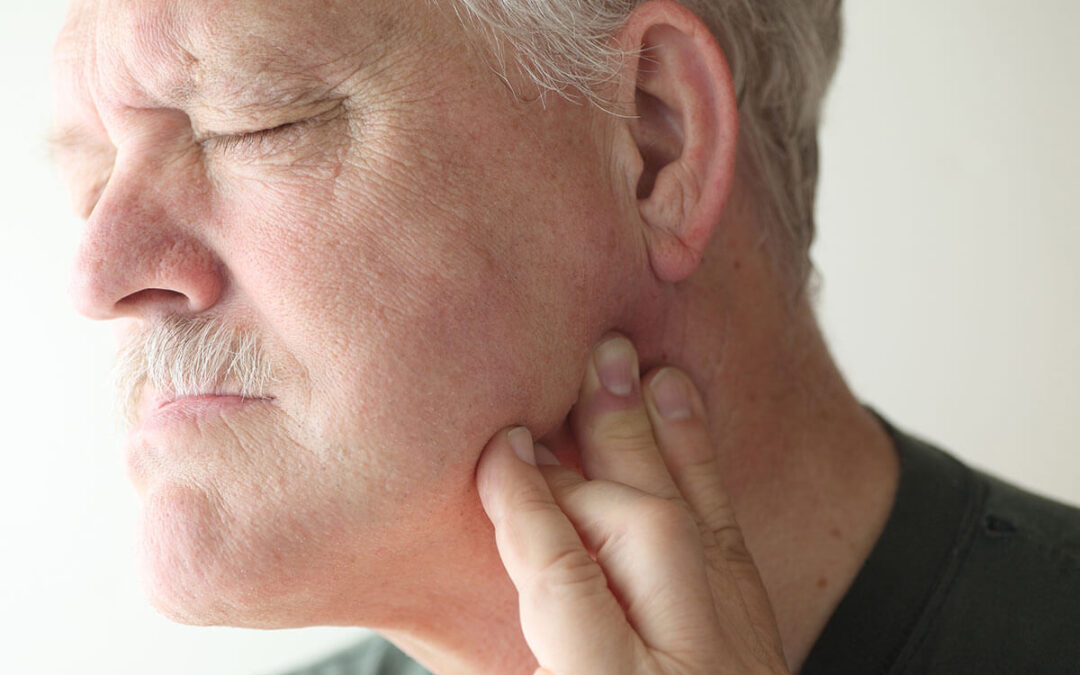
TMJ Disorders: Home Remedies, Medications, and Surgery
Are you experiencing pain or discomfort in your jaw? It could be a sign of TMJ disorders. TMJ, or temporomandibular joint, is the joint that connects your jawbone to your skull. When this joint becomes inflamed or damaged, it can lead to a range of uncomfortable symptoms. But fear not! In this blog post, we will explore the various home remedies, medical treatments, and even surgery options available to help alleviate TMJ disorders. So sit back, relax, and let’s dive into the world of TMJ solutions together!
What is TMJ?
The temporomandibular joint, or TMJ for short, is a hinge-like joint that connects your jawbone to the skull. It allows you to move your jaw up and down, side-to-side, and enables you to chew, speak, and yawn. This complex joint is made up of muscles, ligaments, bones, and cartilage.
When something goes awry with the TMJ, it can lead to a range of issues known as TMJ disorders. These disorders can cause pain and discomfort in the jaw area as well as other related symptoms such as headaches, earaches, difficulty chewing or opening your mouth fully.
TMJ disorders can be caused by various factors including trauma to the jaw joint or surrounding structures. Arthritis in the joint or misalignment of the teeth can also contribute to these conditions. Stress-induced teeth grinding (bruxism) has been linked to TMJ disorders too.
It’s essential to recognize the signs and symptoms of TMJ early on so that prompt treatment can be sought. If you suspect you may have a TMJ disorder, it’s recommended that you consult with a healthcare professional who specializes in treating these conditions. They will evaluate your symptoms thoroughly before recommending appropriate treatment options tailored specifically for you.
Symptoms of TMJ
When it comes to TMJ disorders, understanding the symptoms is crucial for early detection and treatment. While the signs can vary from person to person, there are some common symptoms that may indicate a problem with your temporomandibular joint.
One of the most prevalent symptoms is facial pain or tenderness, particularly in the jaw area also TMJ disorders can affect your neck. This can range from mild discomfort to severe pain that hinders everyday activities like eating and speaking. Another symptom is difficulty opening or closing your mouth fully, often accompanied by a clicking or popping sound when you move your jaw.
Headaches are another common complaint among individuals with TMJ disorders. These headaches can be dull and persistent or sharp and sudden in nature. Additionally, earaches and ringing in the ears (tinnitus) may occur due to the close proximity of the temporomandibular joint to these areas.
Some people experience muscle stiffness around their jaw joints, making it challenging to chew food properly or even speak without discomfort. Others may notice their teeth not fitting together correctly or suddenly feeling misaligned.
If you’re experiencing any of these symptoms on a regular basis, it’s essential to consult a healthcare professional for an accurate diagnosis and appropriate treatment plan tailored specifically for you.
Home Remedies for TMJ
Dealing with the discomfort and pain of TMJ disorders can be challenging, but there are several home remedies that may help alleviate symptoms. While these remedies may not cure the underlying condition, they can provide some relief and improve your overall well-being.
One simple yet effective home remedy is practicing relaxation techniques. Stress has been known to exacerbate TMJ symptoms, so finding ways to relax and reduce stress levels can be beneficial. Try activities like deep breathing exercises, meditation, or yoga to promote relaxation and ease tension in your jaw muscles.
Applying heat or cold packs to the affected area is another common home remedy for TMJ pain. Cold packs can help reduce inflammation and numb the area, while heat packs can soothe sore muscles and increase blood flow. Experiment with both methods to see which provides you with more relief.
Dietary changes may also play a role in managing TMJ symptoms. Avoiding hard or chewy foods that put excessive strain on your jaw joint can help prevent further irritation. Opt for softer options like soups, smoothies, or mashed vegetables instead.
Additionally, incorporating gentle jaw exercises into your daily routine might help relieve stiffness and improve mobility in the joint. Simple movements such as opening and closing your mouth slowly or gently massaging the jaw muscles with your fingers can offer some respite from discomfort.
It’s important to note that these home remedies should supplement professional treatment rather than replace it entirely. If you’re experiencing persistent or severe symptoms of TMJ disorder, it’s crucial to consult a healthcare provider for proper diagnosis and guidance tailored specifically to your needs.
Remember that every individual is unique; what works for one person might not work for another when it comes to managing TMJ disorders at home. It may require some trial-and-error until you find what brings you relief.
Medical Treatments for TMJ
Medical treatments for TMJ disorders can vary depending on the severity of the condition and the individual’s specific symptoms. In some cases, self-care measures and home remedies may be enough to alleviate pain and discomfort associated with TMJ. However, if these conservative methods do not provide relief or if the condition worsens, medical intervention may be necessary.
One common medical treatment for TMJ is medication. Nonsteroidal anti-inflammatory drugs (NSAIDs) such as ibuprofen or naproxen sodium can help reduce inflammation and relieve pain in the jaw joint. Muscle relaxants may also be prescribed to help relax tense muscles in the jaw.
Physical therapy is another option for managing TMJ disorders. This can involve exercises to strengthen and stretch the jaw muscles, as well as techniques to improve posture and reduce stress on the joint.
In more severe cases of TMJ, injections of corticosteroids into the affected joint may be recommended to reduce inflammation and relieve pain. These injections are typically performed by a healthcare professional experienced in treating temporomandibular joint disorders.
If conservative measures fail to provide relief or if there are structural issues causing TMJ symptoms, surgery may be considered as a last resort. Surgical options range from minimally invasive procedures such as arthrocentesis or arthroscopy to more extensive surgeries like open-joint surgery or total joint replacement.
It is important to note that each case of TMJ disorder is unique, so it is essential to consult with a healthcare professional who specializes in temporomandibular joint disorders to determine which treatment approach would be most appropriate for your specific situation.
Surgery for TMJ
Surgery for TMJ disorders is typically considered a last resort when other treatment options have been exhausted. It is important to note that not all cases of TMJ require surgery, and it should only be pursued if conservative treatments have failed to provide relief.
One surgical option for TMJ disorders is arthroscopy, which involves inserting a small camera into the joint to assess and treat any damage. This minimally invasive procedure allows the surgeon to clean out debris, repair or remove damaged tissue, and improve joint function.
In more severe cases or when structural issues are present, open-joint surgery may be necessary. This procedure involves making an incision near the jaw joint to access and repair any abnormalities or damage directly.
While surgery can offer significant relief for some individuals with TMJ disorders, it does come with risks and potential complications. Therefore, it is essential to thoroughly discuss the benefits and drawbacks of surgery with your healthcare provider before making a decision.
Remember that each case of TMJ disorder is unique, so what works for one person may not work for another. It’s crucial to consult with a qualified healthcare professional who specializes in treating TMJ disorders to determine the most appropriate course of action.
How to Prevent TMJ
TMJ disorders can be painful and disruptive, but the good news is that there are steps you can take to prevent or minimize their occurrence. Here are some tips on how to prevent TMJ:
1. Practice good posture: Maintaining proper posture can help alleviate strain on your jaw muscles and joints. Be mindful of your head, neck, and shoulder alignment throughout the day.
2. Avoid excessive chewing: Chewing gum or biting down on hard foods like ice or tough meats can put stress on your jaw joints. Opt for softer foods and cut them into smaller pieces if needed.
3. Manage stress: Stress has been linked to increased muscle tension in the face and jaw area, which can contribute to TMJ problems. Find healthy ways to manage stress such as exercise, relaxation techniques, or talking with a therapist.
4. Use caution when yawning or laughing: Yawning widely or laughing excessively can cause your jaw joints to move out of alignment temporarily. Try supporting your jaw with your hand when yawning or laugh softly instead of loudly.
5. Avoid clenching and grinding teeth: If you have a habit of clenching or grinding your teeth (bruxism), talk to your dentist about getting a mouthguard to wear at night.
Get regular dental check-ups : Regular visits to the dentist not only ensure optimal oral health but also allow for early detection and treatment of any potential issues relatedto TMJ disorders .
By following these preventive measures, you may be able to reduce the frequency and severity of TMJ symptoms.
Conclusion
TMJ disorders can cause significant discomfort and affect various aspects of your life, from eating to speaking. However, with the right approach, you can manage and alleviate the symptoms associated with TMJ.
Home remedies such as applying warm compresses or practicing relaxation techniques can provide temporary relief. Additionally, over-the-counter pain medications can help reduce inflammation and pain.
For more severe cases, medical treatments may be necessary. Your healthcare provider may recommend options like physical therapy or the use of oral splints or mouth guards to align your jaw properly.
In some instances where non-surgical methods are not effective, surgery might be considered. Surgical procedures for TMJ disorders include arthroscopy or open-joint surgery to repair damaged joints or reposition discs.
Preventing TMJ is possible by adopting healthy habits such as maintaining good posture, avoiding excessive chewing gum or nail-biting, and managing stress levels through relaxation techniques.
If you have missing teeth that contribute to your TMJ disorder symptoms, it’s important to consider replacing them as there are many benefits of replacing your teeth. Dental implants offer numerous benefits in improving your bite alignment and reducing strain on the temporomandibular joint.
Remember that every case of TMJ disorder is unique, so it’s crucial to consult with a healthcare professional for an accurate diagnosis and personalized treatment plan. By working closely with your doctor and following their recommendations along with these home remedies and preventive measures, you can effectively manage TMJ disorders and improve your quality of life.

Corporate Social Responsibility: Marketing Spin, or Authentic Philanthropy?
When it comes to corporate social responsibility (CSR), opinions are divided. Some see it as a marketing ploy, a way for companies to save face and attract customers. Others view it as authentic philanthropy, where businesses use their resources for the greater good. But amidst this debate, one thing is clear: ethics in business can often be a contradiction, leaving people cynical and mistrustful of corporations. In this blog post, we’ll explore whether CSR is just another form of marketing spin or if there’s hope for authentic philanthropy in the world of ethical business. So sit back, grab your favorite beverage and let’s dive into the world of CSR!
Business Ethics Are Often a Contradiction
In theory, businesses should operate with integrity and ethics. After all, they have a responsibility to their customers and the wider community. However, in practice, it’s often a different story.
Businesses are under constant pressure from shareholders and investors to make profits. This can lead them to cut corners or engage in unethical practices to boost their bottom line. If your boss is a corporate psychopath chances are your company does not have a social responsibility agenda that is authentic.
Moreover, there’s often a disconnect between what companies say they stand for and what they actually do. They may espouse values like honesty and transparency but then fail to live up to those ideals when faced with difficult decisions.
This contradiction can leave people feeling disillusioned with the business world as a whole. When companies prioritize profit over ethics, it erodes trust in institutions that are meant to serve our needs.
And yet a new direction reveals that team building events are a great way of including corporate social responsibility into your culture due to the positive benefits of activities outside of the workplace.
It’s clear that we need more accountability in business if we want to see real change. Whether through regulation or consumer pressure, something must be done so that ethical behavior becomes the norm rather than the exception.
People Are Often Cynical & Mistrusting of Business
When it comes to business, people often hold a cynical and mistrusting attitude. This is not surprising given the history of unethical practices that have been exposed within corporations over the years. From environmental disasters to labor violations, businesses have not always acted in the best interest of society.
Many consumers are skeptical when they hear about corporate social responsibility initiatives because they believe it is just another marketing ploy. They question whether companies truly care about making a difference or if it’s just a way to improve their public image.
It’s important for businesses to understand this skepticism and work towards building trust with their customers. Authentic philanthropy can be one way to do this, but it needs to be backed up by genuine actions and commitments towards ethical business practices.
Moreover, companies need to realize that being socially responsible should not only be done for reputation management purposes but also as an integral part of their core values. It requires consistent commitment from all levels of the organization and must become ingrained in its culture.
Despite these challenges, there is hope for businesses willing to take on the challenge of corporate social responsibility. By acting ethically and transparently, companies can earn back consumer trust while contributing positively towards society at large.
Corporate Social Responsibility is Often a Joke
Corporate social responsibility (CSR) is a term widely used by corporations to show their commitment towards society. However, we often come across companies that use CSR as a marketing gimmick without actually making any significant impact on the community.
Many firms tend to spend more money on advertising their philanthropic deeds rather than investing in them. They create an illusion of being socially responsible while doing the bare minimum required to maintain a positive public image.
In some cases, these companies even go as far as exploiting communities and their resources for profit while simultaneously claiming to be engaged in CSR activities. It’s disheartening how easily they get away with it.
Moreover, authentic philanthropy may also sometimes become cheapened by deeds when it is seen solely from a business perspective. Companies need to understand that CSR can’t just be about writing checks or supporting popular causes; it has to be deeply ingrained in the company’s core values and culture.
Corporate social responsibility should not just be considered another tick box exercise for businesses looking to improve their reputation but should instead be taken seriously. Genuine efforts towards promoting ethical business practices are essential if we want corporations’ contributions not only towards shareholders but also towards society at large.
Marketing Departments Are Often Trying To Save The Corporation’s Face
Marketing departments are a crucial part of any corporation, tasked with promoting and enhancing the company’s reputation. However, it is no secret that marketing can often be used to cover up corporate misdeeds. When a business faces negative public opinion due to unethical practices or scandals, the marketing department is called upon to restore the company’s image.
This type of reactive approach to corporate social responsibility (CSR) is known as “saving face.” While CSR initiatives are intended to benefit communities and demonstrate a commitment to ethical business practices, saving face typically lacks authenticity and sincerity.
By focusing solely on restoring the corporation’s image through superficial acts of philanthropy or greenwashing campaigns, companies risk alienating their customers further. It becomes clear that they value profits over people and planet.
Furthermore, consumers have become increasingly skeptical about corporations’ intentions when it comes to CSR. Many view these efforts as mere marketing ploys rather than genuine attempts at doing good for society.
In response, corporations must realize that authentic philanthropy requires a long-term commitment towards sustainable development goals and ethical business practices. A proactive approach towards CSR establishes trust between businesses and consumers while simultaneously creating positive change in societies worldwide.
That’s why growing an authentic reputation for your brand requires a long-term approach which is uncompromising in its integrity.
Authentic Philanthropy Is Often Cheapened By Deeds
It’s not uncommon for companies to engage in philanthropic efforts as part of their corporate social responsibility (CSR) initiatives. However, some may argue that these good deeds are often cheapened by the intentions behind them.
Authentic philanthropy is about giving back and making a positive impact on society without expecting anything in return. Unfortunately, some companies use it as a marketing tactic to gain public approval or even worse, tax breaks.
When corporations donate large sums of money to charity, it can give the impression that they are doing something selfless. But what happens when those same corporations commit unethical business practices? The good deeds suddenly become overshadowed by their questionable actions.
Moreover, some companies may only engage in philanthropy if there is an opportunity for brand exposure or media attention. This type of “charitable” behavior is disingenuous and ultimately defeats the purpose of authentic philanthropy.
While corporate philanthropy can undoubtedly make a difference in people’s lives and contribute to societal well-being – it must be done with genuine intent and commitment rather than just for show. Authenticity should always be at the forefront of any CSR campaign if we want true progress towards ethical business practices.
Yet CSR Offers Companies Hope
Corporate Social Responsibility (CSR) is often viewed with a great deal of skepticism by the public. And it’s no wonder why- many companies use CSR as a marketing tool to improve their image, without actually committing to any meaningful change.
But despite this cynicism, I believe that CSR offers hope for companies who are truly committed to ethical business practices. By taking concrete steps towards responsible and sustainable practices, businesses can build trust with consumers and stakeholders alike.
It’s not enough to simply pay lip service to CSR- true commitment requires investment and action. This means taking a hard look at every aspect of your operations and supply chain, from sourcing materials ethically to reducing waste and pollution.
Of course, implementing these changes can be difficult and time-consuming. But in the long run, I believe that they’re worth it both from an ethical standpoint and from a business perspective. Consumers are increasingly demanding transparency and responsibility from the brands they support- those who fail to deliver risk being left behind.
So while there may be some truth behind accusations of “marketing spin” when it comes to CSR initiatives, I still see reason for hope. Companies who take their social responsibilities seriously have the opportunity not only improve their own image but also make real positive changes in our world today.
Corporate Social Responsibility Needs Commitment
Corporate Social Responsibility is not just a marketing tool or a way to save face. It requires true commitment from corporations to make a positive impact on society and the environment. Authentic philanthropy goes beyond writing checks and attending charity events; it involves implementing ethical business practices, investing in sustainable initiatives, supporting local communities, and empowering employees.
Although some people may still view CSR with skepticism due to past misuses of the term by businesses, we should encourage companies that are genuinely committed to making a difference. We can also hold them accountable for their actions through transparency and public scrutiny.
In conclusion (oops!), let’s remember that Corporate Social Responsibility has the potential to drive positive change in our world when approached with sincerity and dedication. As consumers, investors, employees or citizens we have the power to demand more than just marketing spin from big corporations – let’s use this power wisely!
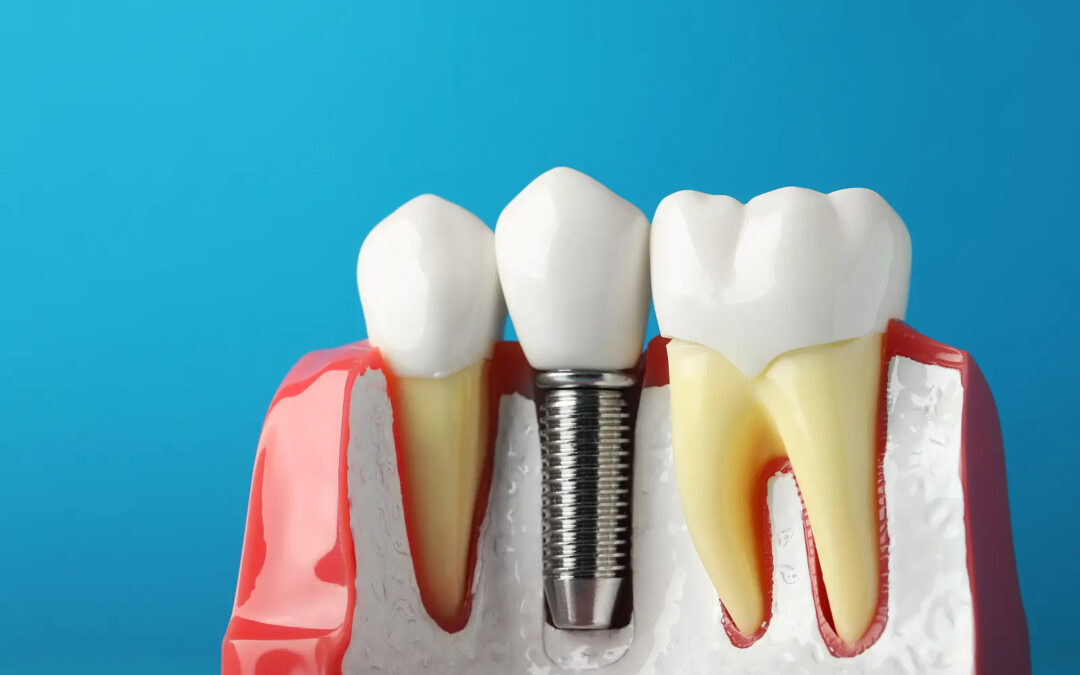
Dental Implants: Will They Deteriorate Faster Than Expected?
Even though there are numerous improvements in dental care, millions of Americans still suffer tooth loss. The most common causes of tooth loss include injury, periodontal disease, and tooth decay. Previously, the only options that were available for individuals with missing teeth were dentures and bridges. The good news is that today dental implants are available and if you’re rich you can afford replacements. Thanks to technological innovations.
Dental Implants: What are They?
Dental implants involve replacements of tooth roots. They offer a strong foundation for removable or permanent/fixed replacement teeth designed to match your natural teeth perfectly. Besides preserving your natural bone, dental implants can even stimulate bone growth.
Dental implant surgeries offer a great alternative to bridgework or dentures that do not fit well. Usually, the process through which a dental implant surgery will be performed depends on the implant type and your jawbone’s condition. Consequently, the surgery may involve several procedures for the best outcome. The most significant benefit of dental implants is their solid support for your teeth. The process requires the bone to heal properly around the implant and may take months to heal.
Can Dental Implants Deteriorate Faster Than Expected?
Typically, dental implants will last you for an extended period of up to 30 years. However, some factors can lead to deterioration of the dental implants earlier than expected. Such issues could lead to bone abnormalities and make it more challenging for patients to adapt to an implant. According to statistics, about 2 million dental implants having fixed dentures are installed annually worldwide. An implant will provide a safe way to restore a lost or deformed tooth without negatively affecting your quality of life.
According to research conducted by a team of dentists from RUDN University, a change in the dominant chewing side cause early dental implant deterioration. Such changes make it hard for one to adapt to an implant.
Also, modern-day dental implants made of titanium show an early deterioration in about 45% of the patients. Even though they are durable and quick to take in the jaw’s bone tissue, they may experience early deterioration, usually caused by micro damage. The micro-damage usually happens when the implant’s load is miscalculated before surgery.
Excessive loads affect the junction between the bone and metal, thus allowing bacteria in under the implant. The bacteria then cause inflammation of the region affected. According to the RUDN University dentists, additional implant load may happen when you change the dominant chewing side, especially in the first month after surgery.
Usually, most individuals do not chew symmetrically on both sides of the jaw. They will have a dominant side that takes up to 75% of chewing movements. Nevertheless, such a side can be altered, for instance, following a sore tooth.
Since it takes about 3-4 months to get attuned to a dental implant, the load on the teeth and type of chewing can change. Thus, most patients will switch to the opposite side for chewing. Thus, the load calculations taken before the surgery took place can change and become invalid.
Conclusion
A change in the dominant chewing side is crucial to the patient’s adaptation to dental implants. According to the research by RUDN University dentists, it can also be the reason for pathological processes leading to implant loss eventually. Therefore, dentists should be aware of such changes and factor them in when establishing postsurgical rehabilitation plants.

Vacation Care Ideas: Creative Activities For Kids
Are you looking for ways to keep your kids entertained and engaged during the school holidays? Look no further than vacation care! This program offers a variety of creative activities that will not only entertain your little ones but also encourage them to learn, socialize, and explore. Whether it’s arts and crafts, indoor or outdoor activities, educational programs, or games and sports, there is something for everyone. In this blog post we’ll share some amazing ideas for Vacation Care Programs that are sure to captivate your children’s imagination while keeping them happy and safe all summer long!
What is Vacation Care?
Vacation Care is a program designed to provide parents with a reliable and engaging alternative to traditional child care during school holidays. It’s an excellent way for children to stay entertained, socialize with peers, and learn new skills all while having fun.
These programs offer various activities such as arts and crafts, indoor/outdoor games, educational sessions that enable children to explore their interests while also encouraging them to try new things. Vacation Care allows kids the chance to be more active in learning beyond the classroom setting.
The best part of Vacation Care is its flexibility; parents can choose which days they want their children enrolled in the program based on their schedules. In addition, there are many creative vacation care programs offering unique experiences for kids like cooking classes or nature walks.
Vacation Care is an excellent option for busy families who need childcare services over holiday periods but don’t want their children sitting at home all day watching TV.
Arts and Crafts
Arts and crafts are a great way for kids to unleash their creativity during vacation care. There’s no limit to what they can create, and it’s always exciting to see the end result.
One idea is to have a theme for each day of the week, such as “animal day” or “underwater world day”. This will give kids some inspiration for their projects and keep things interesting.
Another fun activity is making homemade slime or playdough. Kids love getting messy and creating something that they can play with afterwards! Just make sure you have all the necessary materials on hand before starting.
For those who enjoy painting or drawing, set up an easel outside with some canvases or sketch pads. Not only will this allow them to be creative, but it also gives them a chance to enjoy the outdoors.
Don’t forget about seasonal crafts like making snowflakes in winter or decorating pumpkins in fall. These activities allow kids to explore different textures and materials while celebrating holidays throughout the year.
Arts and crafts are an excellent way for kids to stay engaged during vacation care while developing their creativity skills along the way!
Indoor Activities
When the weather outside is too hot or rainy, indoor activities can be a great way to keep kids entertained during vacation care. There are endless possibilities for fun and engaging activities that can be done indoors.
Arts and crafts projects are always a hit with children of all ages. From painting and drawing to making jewelry or building with clay, there is something for everyone. These types of projects not only provide entertainment but also promote creativity and imagination.
For more educational pursuits, consider setting up science experiments or encouraging kids to read books or write their own stories. Cooking classes can also be a fun way to teach new skills while creating tasty treats.
For some physical activity, try setting up an indoor obstacle course using pillows, cushions, and furniture as obstacles. Or put on some music and have a dance party!
Don’t forget about board games! Classic games like Monopoly or Scrabble can provide hours of entertainment while promoting critical thinking and problem-solving skills.
With these ideas in mind, you’ll never run out of ways to keep your little ones busy on those rainy days inside.
Outdoor Activities
Outdoor activities are a great way to keep children active and engaged during the vacation care period. There are plenty of fun-filled outdoor activities that kids can enjoy, such as water play, field games, nature walks, treasure hunts and more.
One exciting activity is water play where kids can have a blast with water guns or simply run through sprinklers. It’s an excellent way to beat the heat while also keeping them physically fit. Another popular option is field games like football, cricket or touch rugby which helps develop their team-building skills.
Kids love exploring nature too! A leisurely hike in the woods or around the park provides an opportunity for them to learn more about plants and animals while getting some exercise at the same time. Treasure hunts are another thrilling activity that encourages cooperation and teamwork amongst kids.
Outdoor activities give children space to move around and channel their energy into something constructive. It’s a refreshing change from spending hours indoors staring at screens all day long!
Educational Activities
When it comes to vacation care programs, educational activities are a great way to keep kids engaged and learning during their time off from school. These types of activities can range from science experiments to language lessons, and everything in between.
One idea for an educational activity is to have kids participate in a book club where they read and discuss different books throughout the summer. This not only helps with reading comprehension skills, but also encourages critical thinking and discussion among peers.
Another option is to incorporate STEM (science, technology, engineering, math) activities into the program. There are many resources available online that provide easy-to-follow instructions for building simple machines or conducting experiments that teach scientific concepts.
For those interested in history or culture, virtual museum tours can be a fun and informative experience. Many museums offer free virtual tours where visitors can explore collections from around the world without leaving their homes.
Including educational activities in your vacation care program not only keeps children entertained but also promotes continued learning outside of the classroom setting.
Games and Sports
Games and sports are a great way to keep kids active and engaged during vacation care programs. From traditional team games like soccer and basketball to unique individual activities like rock climbing or archery, there are plenty of options for kids of all ages.
For younger children, games like tag, hide-and-seek, and hopscotch can be a lot of fun. These types of games not only get kids moving but also help improve their social skills by encouraging teamwork and communication.
For older children, more challenging sports such as tennis or swimming can provide an opportunity to build physical strength and endurance while also promoting healthy competition between peers.
One benefit of incorporating games and sports into vacation care programs is that it encourages children to explore new hobbies outside the classroom setting. It’s an excellent way for them to discover what they enjoy doing in their free time while staying active at the same time.
Including both indoor and outdoor activities in your vacation care program ensures that every child has something exciting to look forward to each day!
Conclusion
Vacation care doesn’t have to be a time of boredom for kids. With these creative ideas, you can keep them entertained and engaged throughout their break from school. From arts and crafts to educational activities, outdoor adventures to games and sports, there’s something for every child to enjoy.
And don’t forget the importance of social media in promoting your vacation care program. You can promote your vacation care business in marketplace through platforms like social media like Facebook and Instagram to showcase your unique offerings and reach a wider audience.
With these tips in mind, you’ll be well on your way to creating an unforgettable vacation care experience that parents will rave about year after year. So get started planning today!

NON-MONOGAMY
By Danny Redbard
Look, you little idiots.
As your unintended representative of open-relationships & living as a tantric fuck-boi…
I have to have a word with you.
I’m mad at you for being so freaking basic when it comes to the art of intimacy.
Where to begin, Dan…
Monogamy as a standard of purity is bullshit.
Most of your THINK you’re monogamous, but you’re not.
It means “one marriage.”
Which back in the day meant, “1 partner for life.”
Have you had more than 1 partner?
More than 1 marriage?
You’re non-monogamous.
Have you ever cheated on a partner?
You’re non-monogamous.
Have you ever welcomed someone into your bed with you & a partner?
You’re non-monogamous.
If I hear one more person say, “How do you do it? Don’t you get jealous? Oh, I could never let my partner do that with someone else… How do you communicate with all these lovers?”
I do the exact same work as all of you!
I just do it above the board.
You think monogamy means you’re safe, or never going to be triggered, or not going to have to learn to communicate, your partner is never going to feel chemistry with someone else?
You’re kidding yourself.
And how daaaare you think it’s your right to shut down their flirtation for the sake of your fear!
Relationships are the biggest journeys of your life.
It’s not your partners responsibility to keep you fragile.
Gold your partner & yourself to a higher standard of respect.
Stop kidding yourself in thinking that saying you’d never open-relate makes you a more pure, virginal being.
You’re as slutty as the rest of us.
A lot of you just suppress it, shame it, & numb it out with drugs & alcohol. (If you’ve been promiscuous under the influence, I’m talking to you. Your behaviour is evidence of your beliefs that are lies).
You’re telling me there’s NO ONE out there that you’d be slutty for?
You’re lying to yourself.
You simply haven’t put yourself in the right situations.
It’s very easy to be a good little boy/girl when you’re at home reading a book.
Go socialise with friends that touch you all flirty & sensual & tell me that you’re not having sexual thoughts of being with more than 1 partner.
Why is this valuable to acknowledge?
Because… If you’re suppressing shame in this area of your life, it’s showing up in other areas. (Shame runs the belief, “There’s something wrong with me,” unconsciously in your mind & body).
Other areas it’ll show up. Check in:
Where are you keeping yourself small in your business, sales, in your art, in your voice?
If you’re hiding your sexuality, you’re hiding everywhere.
Be real.
Some of you with “business problems,” actually need to go & have a proper orgasm.
Orgasm until you freaking weep with tears.
If you think I’m joking, this might be your 1st time on Earth.
Go & get fucked.
I dare you, you timid, frigid, whining, fearful sook, to go out there & flirt with the world.
I’m done with you all playing small.
I want you all to flirt with abandon; share art like everyone is missing out if you don’t; & offer your business & magic to the world like it’s the most important legacy that you’re leaving on the planet.
Hurry up, frigid fuck.
This is your prime time of life.
The NOW.
There’s no better time to flirt with the world.



In case you don’t get this joke, here’s the story:
By Adrian Belew
In 1978 I did my first tour of Europe as “stunt” guitarist and singer for Frank Zappa’s band. The night we played in Cologne, Germany unbeknownst to me Brian Eno was in the audience. Brian knew David Bowie was looking for a new guitarist for his upcoming tour. He called David after seeing our show and told David he should come see the guitarist for Frank’s band.
The next night we performed in Berlin. There was a part of the show where Frank took an extended guitar solo and most of the band members, including myself, left the stage for a few minutes. As I walked to the back of the stage I looked over at the monitor mixing board and saw David Bowie and Iggy Pop standing there.
Wow! I couldn’t believe it!
So I walked over to David Bowie, shook his hand and said, “I love what you’ve done, thank you for all the music”. And he said, “Great, how would you like to be in my band?” I motioned back towards Frank and said, “Well, I’m kind of playing with that guy.” David laughed and said, “Yes, I know, but when Frank’s tour ends my tour starts two weeks later. Shall we talk about it over dinner?”
David said he would meet me back at our hotel and sure enough when I arrived back at the hotel David Bowie and his assistant Coco Schwab were sitting on a couch in the lobby. As I walked past them they whispered to me, “Get into the elevator, go up to your room, come back down in a few minutes, and meet us outside. We have a car waiting.”
It was like something out of a spy film.
When I came back down and went outside there was a black limousine waiting. The driver opened the door and I got in the back with David and Coco. David immediately launched into all this plans for his upcoming tour, the songs we would play, the staging, and so on, and how much he loved my guitar playing! It was so exciting! He said they were taking me to one of his favorite restaurants in Berlin.
How many restaurants are there in Berlin? 25,000?
We arrived at the restaurant, went in the front door, and who should be sitting at the very first table but Frank Zappa and the rest of the band! So the three of us sat down with Frank and the band. David, trying to be cordial, motioned to me and said, “Quite a guitar player you have here Frank.”
And Frank said, “F••• you Captain Tom.”
(note: Frank had demoted David from Major Tom to Captain Tom.)
David persisted, “Oh come on now Frank, surely we can be gentleman about this?”
Frank said, “F••• you Captain Tom.”
By this point I was paralyzed. David said, “So you really have nothing to say?” Frank said, “F••• you Captain Tom.”
David and Coco and I got up and went back out the front door. Getting in the limo David said in his wonderfully British way, “I thought that went rather well!”

Gun Violence: Letter from the USA
Bunch of DMs this morning asking if I’m going to say anything about the most recent (is it the most recent? It’s been 24 hours, maybe not) mass shooting.
What do you want me to say?
Seriously, what do you want me to say?
I’ve literally written tens of thousands of words about gun violence. My essays have been read by millions. I don’t know what the hell else I can say.
We wake up to this every day. And for about five minutes the media will be full of ranting and rage and the usual cliched platitudes from pundits, politicians, and holy men (all of whom are getting their bloody palms greased by the NRA), and then we’ll move on and tomorrow it’ll be another orgy of gun violence and we’ll do it again. No one will do anything. No member of government will do anything beyond empty thoughts and prayers. Nothing will change. This is the nation we live in. Hell, *I* will get death threats from gun nuts simply for typing this post, count on it.
Fatalistic?
Cynical?
Yep.
Nevertheless, there it is.
We simply do not have the moral courage to do anything. At all.
We are willing hostages to murderous fanatics and we are completely willing to sacrifice our kids to the gun lobby. I mean, shit, half of American voters don’t even show up, that’s how little most of America cares.
You want me to say something?
I’ve said it. Over and over.
There is nothing left to say.
• Jim Wright
25 years of thoughts and prayers:
Thurston High School
Columbine High School
Heritage High School
Deming Middle School
Fort Gibson Middle School
Buell Elementary School
Lake Worth Middle School
University of Arkansas
Junipero Serra High School
Santana High School
Bishop Neumann High School
Pacific Lutheran University
Granite Hills High School
Lew Wallace High School
Martin Luther King, Jr High School
Appalachian School of Law
Washington High School
Conception Abbey
Benjamin Tasker Middle School
University of Arizona
Lincoln High School
John McDonogh High School
Red Lion Area Junior High School
Case Western Reserve University
Rocori High School
Ballou High School
Randallstown High School
Bowen High School
Red Lake Senior High School
Harlan Community Academy High School
Campbell County High School
Milwee Middle School
Roseburg High School
Pine Middle School
Essex Elementary School
Duquesne University
Platte Canyon High School
Weston High School
West Nickel Mines School
Joplin Memorial Middle School
Henry Foss High School
Compton Centennial High School
Virginia Tech
Success Tech Academy
Miami Carol City Senior High School
Hamilton High School
Louisiana Technical College
Mitchell High School
EO Green Junior High School
Northern Illinois University
Lakota Middle School
Knoxville Central High School
Willoughby South High School
Henry Ford High School
University of Central Arkansas
Dillard High School
Dunbar High School
Hampton University
Harvard College
Larose-Cut Off Middle School
International Studies Academy
Skyline College
Discovery Middle School
University of Alabama
DeKalb School
Deer Creek Middle School
Ohio State University
Mumford High School
University of Texas
Kelly Elementary School
Marinette High School
Aurora Central High School
Millard South High School
Martinsville West Middle School
Worthing High School
Millard South High School
Highlands Intermediate School
Cape Fear High School
Chardon High School
Episcopal School of Jacksonville
Oikos University
Hamilton High School
Perry Hall School
Normal Community High School
University of South Alabama
Banner Academy South
University of Southern California
Sandy Hook Elementary School
Apostolic Revival Center Christian School
Taft Union High School
Osborn High School
Stevens Institute of Business and Arts
Hazard Community and Technical College
Chicago State University
Lone Star College-North
Cesar Chavez High School
Price Middle School
University of Central Florida
New River Community College
Grambling State University
Massachusetts Institute of Technology
Ossie Ware Mitchell Middle School
Ronald E McNair Discovery Academy
North Panola High School
Carver High School
Agape Christian Academy
Sparks Middle School
North Carolina A&T State University
Stephenson High School
Brashear High School
West Orange High School
Arapahoe High School
Edison High School
Liberty Technology Magnet High School
Hillhouse High School
Berrendo Middle School
Purdue University
South Carolina State University
Los Angeles Valley College
Charles F Brush High School
University of Southern California
Georgia Regents University
Academy of Knowledge Preschool
Benjamin Banneker High School
D H Conley High School
East English Village Preparatory Academy
Paine College
Georgia Gwinnett College
John F Kennedy High School
Seattle Pacific University
Reynolds High School
Indiana State University
Albemarle High School
Fern Creek Traditional High School
Langston Hughes High School
Marysville Pilchuck High School
Florida State University
Miami Carol City High School
Rogers State University
Rosemary Anderson High School
Wisconsin Lutheran High School
Frederick High School
Tenaya Middle School
Bethune-Cookman University
Pershing Elementary School
Wayne Community College
JB Martin Middle School
Southwestern Classical Academy
Savannah State University
Harrisburg High School
Umpqua Community College
Northern Arizona University
Texas Southern University
Tennessee State University
Winston-Salem State University
Mojave High School
Lawrence Central High School
Franklin High School
Muskegon Heights High School
Independence High School
Madison High School
Antigo High School
University of California-Los Angeles
Jeremiah Burke High School
Alpine High School
Townville Elementary School
Vigor High School
Linden McKinley STEM Academy
June Jordan High School for Equity
Union Middle School
Mueller Park Junior High School
West Liberty-Salem High School
University of Washington
King City High School
North Park Elementary School
North Lake College
Freeman High School
Mattoon High School
Rancho Tehama Elementary School
Aztec High School
Wake Forest University
Italy High School
NET Charter High School
Marshall County High School
Sal Castro Middle School
Marjory Stoneman Douglas High School
Great Mills High School
Central Michigan University
Huffman High School
Frederick Douglass High School
Forest High School
Highland High School
Dixon High School
Santa Fe High School
Noblesville West Middle School
University of North Carolina Charlotte
STEM School Highlands Ranch
Edgewood High School
Palm Beach Central High School
Providence Career & Technical Academy
Fairley High School (school bus)
Canyon Springs High School
Dennis Intermediate School
Florida International University
Central Elementary School
Cascade Middle School
Davidson High School
Prairie View A & M University
Altascocita High School
Central Academy of Excellence
Cleveland High School
Robert E Lee High School
Cheyenne South High School
Grambling State University
Blountsville Elementary School
Holmes County, Mississippi (school bus)
Prescott High School
College of the Mainland
Wynbrooke Elementary School
UNC Charlotte
Riverview Florida (school bus)
Second Chance High School
Carman-Ainsworth High School
Williwaw Elementary School
Monroe Clark Middle School
Central Catholic High School
Jeanette High School
Eastern Hills High School
DeAnza High School
Ridgway High School
Reginald F Lewis High School
Saugus High School
Pleasantville High School
Waukesha South High School
Oshkosh High School
Catholic Academy of New Haven
Bellaire High School
North Crowley High School
McAuliffe Elementary School
South Oak Cliff High School
Texas A&M University-Commerce
Sonora High School
Western Illinois University
Oxford High School
Robb Elementary SchoolThurston High School
Columbine High School
Heritage High School
Deming Middle School
Fort Gibson Middle School
Buell Elementary School
Lake Worth Middle School
University of Arkansas
Junipero Serra High School
Santana High School
Bishop Neumann High School
Pacific Lutheran University
Granite Hills High School
Lew Wallace High School
Martin Luther King, Jr High School
Appalachian School of Law
Washington High School
Conception Abbey
Benjamin Tasker Middle School
University of Arizona
Lincoln High School
John McDonogh High School
Red Lion Area Junior High School
Case Western Reserve University
Rocori High School
Ballou High School
Randallstown High School
Bowen High School
Red Lake Senior High School
Harlan Community Academy High School
Campbell County High School
Milwee Middle School
Roseburg High School
Pine Middle School
Essex Elementary School
Duquesne University
Platte Canyon High School
Weston High School
West Nickel Mines School
Joplin Memorial Middle School
Henry Foss High School
Compton Centennial High School
Virginia Tech
Success Tech Academy
Miami Carol City Senior High School
Hamilton High School
Louisiana Technical College
Mitchell High School
EO Green Junior High School
Northern Illinois University
Lakota Middle School
Knoxville Central High School
Willoughby South High School
Henry Ford High School
University of Central Arkansas
Dillard High School
Dunbar High School
Hampton University
Harvard College
Larose-Cut Off Middle School
International Studies Academy
Skyline College
Discovery Middle School
University of Alabama
DeKalb School
Deer Creek Middle School
Ohio State University
Mumford High School
University of Texas
Kelly Elementary School
Marinette High School
Aurora Central High School
Millard South High School
Martinsville West Middle School
Worthing High School
Millard South High School
Highlands Intermediate School
Cape Fear High School
Chardon High School
Episcopal School of Jacksonville
Oikos University
Hamilton High School
Perry Hall School
Normal Community High School
University of South Alabama
Banner Academy South
University of Southern California
Sandy Hook Elementary School
Apostolic Revival Center Christian School
Taft Union High School
Osborn High School
Stevens Institute of Business and Arts
Hazard Community and Technical College
Chicago State University
Lone Star College-North
Cesar Chavez High School
Price Middle School
University of Central Florida
New River Community College
Grambling State University
Massachusetts Institute of Technology
Ossie Ware Mitchell Middle School
Ronald E McNair Discovery Academy
North Panola High School
Carver High School
Agape Christian Academy
Sparks Middle School
North Carolina A&T State University
Stephenson High School
Brashear High School
West Orange High School
Arapahoe High School
Edison High School
Liberty Technology Magnet High School
Hillhouse High School
Berrendo Middle School
Purdue University
South Carolina State University
Los Angeles Valley College
Charles F Brush High School
University of Southern California
Georgia Regents University
Academy of Knowledge Preschool
Benjamin Banneker High School
D H Conley High School
East English Village Preparatory Academy
Paine College
Georgia Gwinnett College
John F Kennedy High School
Seattle Pacific University
Reynolds High School
Indiana State University
Albemarle High School
Fern Creek Traditional High School
Langston Hughes High School
Marysville Pilchuck High School
Florida State University
Miami Carol City High School
Rogers State University
Rosemary Anderson High School
Wisconsin Lutheran High School
Frederick High School
Tenaya Middle School
Bethune-Cookman University
Pershing Elementary School
Wayne Community College
JB Martin Middle School
Southwestern Classical Academy
Savannah State University
Harrisburg High School
Umpqua Community College
Northern Arizona University
Texas Southern University
Tennessee State University
Winston-Salem State University
Mojave High School
Lawrence Central High School
Franklin High School
Muskegon Heights High School
Independence High School
Madison High School
Antigo High School
University of California-Los Angeles
Jeremiah Burke High School
Alpine High School
Townville Elementary School
Vigor High School
Linden McKinley STEM Academy
June Jordan High School for Equity
Union Middle School
Mueller Park Junior High School
West Liberty-Salem High School
University of Washington
King City High School
North Park Elementary School
North Lake College
Freeman High School
Mattoon High School
Rancho Tehama Elementary School
Aztec High School
Wake Forest University
Italy High School
NET Charter High School
Marshall County High School
Sal Castro Middle School
Marjory Stoneman Douglas High School
Great Mills High School
Central Michigan University
Huffman High School
Frederick Douglass High School
Forest High School
Highland High School
Dixon High School
Santa Fe High School
Noblesville West Middle School
University of North Carolina Charlotte
STEM School Highlands Ranch
Edgewood High School
Palm Beach Central High School
Providence Career & Technical Academy
Fairley High School (school bus)
Canyon Springs High School
Dennis Intermediate School
Florida International University
Central Elementary School
Cascade Middle School
Davidson High School
Prairie View A & M University
Altascocita High School
Central Academy of Excellence
Cleveland High School
Robert E Lee High School
Cheyenne South High School
Grambling State University
Blountsville Elementary School
Holmes County, Mississippi (school bus)
Prescott High School
College of the Mainland
Wynbrooke Elementary School
UNC Charlotte
Riverview Florida (school bus)
Second Chance High School
Carman-Ainsworth High School
Williwaw Elementary School
Monroe Clark Middle School
Central Catholic High School
Jeanette High School
Eastern Hills High School
DeAnza High School
Ridgway High School
Reginald F Lewis High School
Saugus High School
Pleasantville High School
Waukesha South High School
Oshkosh High School
Catholic Academy of New Haven
Bellaire High School
North Crowley High School
McAuliffe Elementary School
South Oak Cliff High School
Texas A&M University-Commerce
Sonora High School
Western Illinois University
Oxford High School
Bridgewater University
Robb Elementary School
Michigan State University
Covenant Christian School
Next TBA…
**feel free to copy and paste, then share**

Sydney Cosmetic Dentist Attacked: Dr William Zafiropoulos Hospitalised
Dr William Zafiropoulos, a prominent cosmetic dentist in Sydney, was brutally attacked in his clinic on Monday, March 6th. According to reports from the Sydney Morning Herald, the attack was carried out by two well-dressed individuals who used a hammer to inflict serious injuries on Dr Zafiropoulos, leaving him hospitalized and in critical condition.
This incident has sent shockwaves through the dental community, highlighting the risks that cosmetic dentists face in their line of work. As cosmetic dentistry continues to gain popularity, dentists in Sydney are calling for better safety measures to protect them from such attacks. In this article, we will explore the implications of this attack and its impact on the dental industry in Sydney.
The Attack
Dr Zafiropoulos, who owns the Classic Smiles dental clinic in Sydney’s suburb of Miranda, was reportedly attacked by a man and a woman who posed as patients. The attackers had booked an appointment under false names and arrived at the clinic dressed in business attire. As soon as they entered the treatment room, they attacked Dr Zafiropoulos with a hammer, causing severe injuries to his head and face.
According to witnesses, the attackers appeared calm and collected throughout the attack, showing no signs of remorse or fear of being caught. They fled the scene immediately after the attack, leaving Dr Zafiropoulos bleeding on the floor.
The Aftermath
Dr Zafiropoulos was rushed to the hospital, where he underwent emergency surgery for his injuries. He is currently in critical but stable condition, and the police are actively investigating the case to identify and apprehend the attackers.
The attack on Dr Zafiropoulos has sent shockwaves through the dental community, with many dentists expressing their concerns about the safety of their profession. Cosmetic dentistry, in particular, has become increasingly popular in recent years, with more people seeking treatments to improve their appearance. However, this trend has also made cosmetic dentists more vulnerable to attacks from disgruntled patients or criminals.
Safety Measures for Cosmetic Dentists
Cosmetic dentists in Sydney expect to work in safety, but the reality is that their profession can be risky. While there is no foolproof way to prevent attacks, there are several measures that dentists can take to minimize the risk.
Some of these measures include:
- Installing security cameras in the clinic to deter criminals
- Conducting thorough background checks on all patients before treatment
- Having a panic button installed in the treatment room for emergencies
- Employing security personnel to monitor the clinic and surrounding areas
Cosmetic dentists should also stay informed about any potential threats or risks in their area and take steps to protect themselves accordingly.
Impact on the Dental Industry
The attack on Dr Zafiropoulos has also highlighted the need for greater awareness and support for dentists who specialise in treating marginalised communities. Cosmetic dentists who work with transgender patients, for example, have reported an increase in social media attacks and harassment.
According to a report by Scigentasy, a publication dedicated to advancing diversity in healthcare, social media attacks on trans-friendly dentists are increasing, with many dentists receiving threatening messages or negative reviews for providing services to transgender patients.
Social media attacks can have a devastating impact on the reputation and livelihood of dentists, and there is a need for greater support and protection for those who are targeted. As a society, we must stand up against all forms of discrimination and harassment, including those aimed at healthcare professionals.
Conclusion
The attack on Dr Zafiropoulos is a stark reminder of the risks that cosmetic dentists face in their line of work. While the police investigation is ongoing, the dental community in Sydney is calling for greater safety measures and support for dentists who are targeted by criminals or harassed on social media.
As consumers, we should also be aware of the risks involved in cosmetic dentistry and choose reputable dentists who have taken steps to ensure their safety and that of their patients.
In conclusion, the attack on Dr Zafiropoulos has highlighted the need for greater safety measures and support for cosmetic dentists in Sydney. The dental industry must work together to ensure the safety and wellbeing of all dentists, and we as a society must stand up against all forms of discrimination and violence. By doing so, we can create a safer and more inclusive environment for all.

Educating Kids in Financial Matters: Where Should a Parent Start?
How did you get educated about money when you were a kid? Maybe your parents handed you a few shekels to swing by the grocery store for milk. After getting through the checkout and counting out the change, maybe you stuffed the rest back into your pocket and headed home with a small profit.
Today, educating kids on how to manage money is changing fast. As technology around payments and money management has evolved, transactions are often no longer tangible. Cash is becoming less common and learning to become financially savvy is beginning to take a much different shape than in the past. Starting a conversation to educate your kids early, and building growth can help them navigate the world and their finances successfully.
As post-millennial parents, your kids always come first. This also means prioritising your finances to accommodate your child, and educating them as they grow up to be financially savvy. By age 7, kids will already have habits that will translate into their adulthood and finances. Make sure you prepare yourself to educate your kids regarding proper money matter management in all relevant aspects.
Explore resources when raising your child to ensure your finances and your kid’s finances are always in the best shape.
Educate Kids About Money in Elementary School and Earlier
These strategies are appropriate for very young children. You can do some, like talking openly about money around your kids, at a very early age. Others need to wait until kids are old enough to manage small sums of money on their own to mimic the experience of both spending and saving money.
Educate Openly About Money With Your Kids
Time and again, you hear the same refrain. It’s never too early to start discussing money with your kids. Take this logic one step further and resolve to speak openly about money with and around your kids from a young age. Feel free to discuss sensitive financial matters, such as salary negotiations and the status of your retirement accounts in the presence of your kids.
Talking about money around young children might feel awkward at first, but there’s no good reason to shoo them out of the room so the grown-ups can have a frank discussion. And if you’re worried about them sharing the details of these conversations far and wide, emphasise that financial specifics are fine to discuss in the home but aren’t appropriate to divulge to friends, teachers, or random people at the supermarket.
Young kids might not understand everything you discuss, but that’s okay. They don’t understand all the words in the stories you read with them either. That doesn’t stop you because you trust they’ll pick more up with repetition and age.
Lead Kids by Example
You’re your kids’ most visible and vital role model. That may change during their rebellious adolescent years, but they’re all yours during elementary school.
By visibly following through on the fiscal wisdom you dole out to your kids, you show them it’s possible to live within your means. Kids are perceptive, and they often pick up on cues even when you don’t explicitly call them out. But your message will ring clearer and stick longer with good-natured repetition.
So when you want to convey a money management concept to your child, explain why and how you’re doing it. And look for teachable moments wherever you go. Mundane activities like shopping outings are ripe for reinforcement. It takes just a few seconds to explain to your kid why you chose the cheaper generic option over the functionally equivalent name-brand option.
Give Them Fake Money
It’s not as cruel as it sounds. Fake money teaches young kids about the value of money without entrusting them with any hard-earned cash. Think of it as training wheels for budding consumers, with you (the parent) playing the dual role of banker and merchant. Toy guns may now be politically incorrect, but board games that feature money exchanges inevitably excite children of all ages and are trainer wheels for capitalistic impulses.
Set reasonable values for various chores, cleaning up after a meal, privileges stretching bedtime, and things they want snacks.
Avoid an Open-Wallet Policy
Don’t give your kids an open line of credit. Instead, set constraints on spending money, even if you can’t help spoiling them occasionally.
You’ve gotten used to telling your kids no on other matters. Putting your foot down on requests for cash or parent-aided purchases like video games and candy at the grocery store is no different. It’s essential to lay out this marker early in your kids’ financial education. The longer you wait, the harder old habits will die.
How hands-on you’d like to be is up to you. You can go so far as to set up a household bank – not a real bank account, but a pile of money you and your kids know the balance of. This way, your kids know exactly how much they can spend each week or month, and they won’t be surprised when they hear no. Over time, they’ll realise they have to save up for bigger purchases.
Be Equitable and Pay Kids Fairly for Age-Appropriate Chores
If you dole out an allowance to young children without requiring work, ensure it’s equitable on an age-weighted basis – you can give raises every year or quarter. If you pay wages for chores, assign equal amounts of work and an equal pay rate.
Sadly, the gender wage gap has come for kids too. According to data from BusyKid, a personal finance app for kids, girls receive less than half the weekly allowance given to boys, a starker divide than the gender pay gap for adults. That’s unfair and inconsistent with the principle that every kid deserves the same chance to succeed.
Eventually, extenuating circumstances might render equitable financial treatment impractical. For instance, you probably need to provide more support to a kid who gets into an ivy league university than one who enrols in a technical certificate program at the local community college. But that’s likely years off. We’re talking about kids in elementary school here. There’s no reason not to start your little ones on a level playing field.
Don’t Compensate for Tasks Kids Have to Do Anyway
A well-designed household chore schedule is a win-win. For parents, it’s a dumping ground for mundane, low-value tasks for which they lack the time or patience. For kids, it’s a buffet of practical earning opportunities and a long, low-stakes introduction to the sorts of rote tasks they’ll soon enough need to complete on their own.
Just resist the temptation to unduly relax your definition of a chore to draw in tasks your kids have to do anyway, like cleaning their room or keeping play spaces clean. Even in elementary school, your kids’ chores should be at minimum jobs that benefit everyone in the household, such as washing all the dishes after a family meal, dusting the entire house rather than just the kids’ rooms, or cleaning and vacuuming floors throughout the home.
The goal is to only compensate kids for jobs you’d otherwise have to do yourself or pay someone from outside the household to do. In effect, you’re hiring your kids to do these tasks and teaching them the value of a dollar in the process. Just be sure to pay them enough to encourage them to look forward to or at least not actively avoid these assignments.
Use Praise and Tough Love
Use a combination of praise and tough love to instill financial discipline in your brood. When your kid makes a deposit into your household bank or tucks a dollar bill away for a future purchase, tell them they’re doing the right thing. If you’re feeling exceptionally generous, throw in a low-cost treat, like an extra half-hour of screen time that evening.
You can also encourage your kids to make sound financial decisions by reminding them that by spending today, they’re deferring or forgoing future purchases they may value more. Don’t punish them for overspending. Just make it crystal-clear what they’re missing and remind them of that when they run out of money for something they want.
Educate Kids About Money in Middle School
These strategies are best for kids old enough to understand more complex financial concepts that are fundamental to financial literacy, like balancing a checkbook and managing debt.
Open a Custodial Bank Account for Them Early
Once you trust your kids enough to make their own spending and saving decisions without the aid of a piggy bank or closely supervised app like Greenlight, open a custodial bank account in their name.
There’s no real downside to setting up a bank account early, given that your joint account opens a whole new world of teachable concepts. But younger kids won’t participate as actively in account management and may not take any interest at all.
Cross this item off your list by the time your kids hit tweendom, say, 10 or 11 years old, to give them plenty of time before high school and hopefully their first job outside the home to get up to speed on banking.
Get Them Excited About Money Management
Now’s the time to get your kids jazzed about something — anything — that involves sound financial decision-making.
For example, though chequebooks are obsolete , some personal finance experts recommend ordering cheques on joint accounts anyway. Balancing a chequebook helps demonstrate basic money management concepts.
If your family regularly donates to non-profit organisations, get your kids involved in the process of selecting recipients and setting aside funds for quarterly or year-end giving. More likely than not, they’ll embrace the purpose-driven nature of the exercise. Nothing conveys the power of a dollar like seeing firsthand its potential to do good in the world.
Educate Kids About Money in High School and Beyond
Roll out these strategies as your money management cadets approach adulthood. Before they get their first job or head off to college or both, they need to understand the basics of budgeting, taxes, borrowing, and investing.
Educate Them About Taxes and Accounting
Millions of kids work part-time in high school. Before they take their first tentative steps into the labor market, they need to understand the difference between gross pay and net pay. So it’s time they learn that earning money means paying taxes.
If you use a human accountant to prepare your household’s taxes, take your child to this year’s appointment. That way, kids learn that even parents must make financial tradeoffs and that not all the money you earn is yours.
If you prepare your taxes online, show your kid how the process works. If you or your kid don’t have time to complete the process in one sitting, just show them the ropes as you can. If your family uses a certified financial adviser or financial planner, loop your kids in on your financial planning meetings too.
Educate Children About the Importance of Avoiding High-Interest Debt
Many parents discourage kids from using credit cards altogether. That’s a perfectly valid approach to financial education and one that keeps them away from one of the most common drivers of consumer debt altogether.
Even if you’re fine with your kids using credit cards when they’re old enough, have the debt talk with them before co-signing a credit card application or student loan, particularly warning them about the risks of carrying high-interest balances from month to month.
The debt talk isn’t just appropriate for budding credit card users. You can also use it to warn kids off uglier forms of debt too, such as predatory payday loans. It shouldn’t be a difficult sell, given the litany of consequences of bad credit: higher interest rates, higher car insurance rates, trouble renting an apartment or securing a cellphone contract, difficulty securing a job, or obtaining a security clearance.
Anyway, sound credit management practices are sound money management practices. Every dollar your kids don’t have to pay toward a carried credit balance is a dollar they can sock away so it can earn interest in a savings account or grow in an investment account.
Help Them Budget and Apply for Student Loans
Applying for student loans and budgeting for post-graduation repayments are likely to be among your kids’ least favorite financial exercises, but they’re a piece of the financial education puzzle. Kids who aren’t prepared to set aside significant chunks of their take-home pay for student debt simply aren’t set up for frugal-living success.
Help Them Build Credit and Introduce the Importance of a Good Credit Score
It’s never too early to begin building credit for your kids. One easy way to help your teen build credit is to add them as an authorised user on your credit card. If and when they apply for private student loans, add yourself to the loans as a co-signer. The lender might require applicants with limited credit histories to have a co-signer anyway. For many young people, a student credit card is the first credit card they open. That’s because most student cards give college students enrolled in a two- or four-year college the chance to build credit. Some even let them earn rewards and receive student-centric benefits.
As you set them off on their credit-building journey, ensure your teenagers understand why it’s crucial to build and maintain good credit in the first place. Help them understand the real-world consequences of bad credit, like higher insurance premiums and problems finding quality rental housing, surely a top-of-mind concern for kids looking ahead to independent living.
Show them how to check their credit score with consumer credit-reporting bureaus or consumer finance platforms like Credit Karma. Make sure they know they’re entitled to one free credit report per year from each bureau. And give them tips to improve their scores over time, like maintaining low credit balances and using free score boosters like Experian Boost.
And while encouraging them to maintain a good credit score at all costs, let them know that if they do stumble, then they can get help from a reputable credit repair company.
Is Crypto a Safe Activity For Teenagers?
Recently some teenagers have been asking their parents if they can have a cryptocurrency account.
For some parents it’s too confronting, but if a teenager is given strict guidelines about limits to amounts they can invest, and they’re prepared to be closely supervised, even with casual questions two or three times a week asking them what their balance is, then this can be a positive and enjoyable experience for both the teenager and parent.
While not every teenager will be as successful as teen crypto millionaire Erik Finman, even small gains can create excitement, and in a world where teenagers so often communicate with their parents in grunts and monosyllables, it’s one avenue which can open a teen up to much more enthusiastic and regular conversation.
Educate Them the Three Types of Personal Savings
Before they leave the nest, ensure your kids understand the three primary types of savings:
- Personal savings
- Emergency funds
- Retirement savings
Give them an overview of each type what it’s for when to contribute, why it matters to their savings goals, and when to draw upon it.
Help Them Set and Achieve Goals
As kids get older, parents can help them set goals but another factor that can be beneficial in helping them achieve those goals. Gives the example of a kid saving up for a winter ski trip: the parents can match their savings by the dollar to help them make it happen.
By helping them, kids understand to pay close attention to opportunities. And number two, it also helps them have some skin in the game and understand how much time goes into saving all that money.
Final Word
Kids are like snowflakes. They’re all different. So are parents.
As a parent, you have wide latitude to educate your kids on the value of money and instill sensible money habits.
However you choose to provide your kid’s financial lessons, never forget it’s also in your interest to ensure that they know how to manage and grow their own money in the real world for years to come. After all, you might rely on your kids’ thrifty habits to support you long after you hang up your working hat for good.

Italy’s Best Places To Live Permanently, Not Just Visit
Where would I live in Italy, other than where I currently live, in a small village near Udine?
I like edges. So coastal, or close to other borders. Liguria seems pretty convenient. But then again, people say Verona is nice. It’s a goodish size, but on the downside it’s pretty central (so neither border nor coastal). But my interests may be different from yours. I would want good cycling possibilities, and access to lots of wilder areas. At this stage of my life I don’t want to be near big urban areas, which you on the other hand may do. You couldn’t pay me to live in Milan for example. If you love Milan or Rome as a permanent base, I don’t think my top 5 would be any good for you.
So I’ve been thinking about places that I wouldn’t mind living in. A bit difficult because honestly I love where I am, and wouldn’t want to move. But for the sake of a hypothetical …
1. Trentino Alto Adige. Mostly for the lifestyle, as it has a great sporting culture, lots of mountain trails, bike paths, etc. The problem for foreign parents is that schools there would be in German, not English (it’s South Tyrol).
2. Liguria, somewhere on the coast far from any big touristic centre. Mostly for its nearness to France, Monaco, Spain etc.
3. Asti/Monferrato/Langhe in Piemonte. Gorgeous hills, fantastic wine and food, fairly convenient location for France also.
4. Maybe nearish Siena, or one of the minor towns in Toscana. Not the Gallo Nero region because that’s overrun with tourists, but somewhere away from that section, but still close-ish to Siena. Just because Toscana is so gorgeous. Can’t really blame the tourists for wanting to go there.
5. If I have to make it five, then possibly Verona, or Treviso, or some smaller place in Veneto. Somewhere hilly.
6. Sometimes overlooked by tourists who are understandably caught up in the museums and other attractions of Florence, the ancient city of Lucca is well worth a visit in its own right. It is perfect for a day trip, or if you have more time, it is also a great base from which to explore Pisa and Siena to the south, Versilia and the coast to the west, or the Apuan Alps of northern Tuscany.
This convenient central location in Tuscany has caused Lucca some grief in its over 2,000 years of history, but being the centre of much conflict from Roman times all the way to the 16th century and beyond gave rise to Lucca’s most distinctive architectural feature: the impressive stone walls that surround and enclose the historic district of this fascinating Italian town.
https://internationalliving.
7. While sharing links, here’s “50 dreamy villages you should visit in Italy” https://www.facebook.
8. Another great region is Abruzzo, east of Rome, with an Adriatic coastline and the Apennine Mountains. National parks and nature reserves cover much of its rugged interior. It also encompasses hilltop towns, dating to the medieval and Renaissance periods. Regional capital L’Aquila is a walled city, damaged in a 2009 earthquake. The Trabocchi Coast, with sandy coves, is named after its traditional wooden fishing piers. https://
So there you have it. Penny’s top alternatives to Udine. But honestly, if I had to move I’d probably move further away, somewhere in Portugal (again, coastal), or maybe Barcelona. And if I were buying a house I’d do it in Croatia, in Istria. You might still be able to get a beach house for less than an arm and a leg.
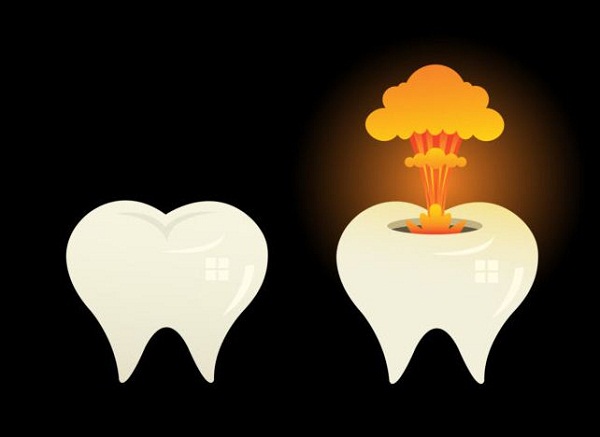
Major Gingivitis Research in Europe Reveals Grim Fact
Brushing your teeth is not enough.
Finland’s Metropolia University of Applied Sciences is currently conducting the largest periodontitis study in Europe. The three-year study’s preliminary findings show that brushing and flossing isn’t enough. Utilising other antibacterial methods that eliminates disease-causing bacteria from dental plaque considerably lowers gingivitis and enhances dental hygiene. An inner-city hub for gum disease treatment in Brisbane is proud to offer patients gum and periodontal treatment to help heal the mouth.
We brush them, we floss them, we whiten them – and for some people, that’s just the beginning. For some people, their obsession with their teeth goes far beyond the basic maintenance, which, this study, has actually found to be a good practice. “You can only remove half of the plaque by brushing your teeth – it’s no wonder cavities and gingivitis are among the most common diseases in the world. If we want to improve the results of dental care treatments, we need to focus on removing the plaque that is left on the teeth after brushing them,” says Professor Timo Sorsa from the Department of Oral and Maxillofacial Diseases at the University of Helsinki.
Advanced gingivitis, also known as periodontitis, harms the collagen fibres that surround the teeth. Gum pockets may become deeper as a result of this. As the illness worsens, the infection results in tissue loss, which could ultimately result in the loss of one or more teeth. Up to 50% of people over the age of 50 have periodontitis, making it a very widespread condition. While maintaining good oral hygiene is crucial, in cases of advanced infection, gum pockets require routine expert cleaning. However, it can be challenging to remove germs from gum pockets using conventional procedures. As a result, diseases spread as additional bacteria fill the pockets.
Up to 70% of people in Western countries suffer from periodontitis, a bacterial illness that is chronic in nature. The sixth most prevalent disease in the globe, periodontitis has been linked to diabetes and cardiovascular disease. Regularly removing dental plaque enhances dental hygiene because the bacteria in the plaque are responsible for 95% of dental illnesses. Additionally, it treats and prevents gum and tooth problems.
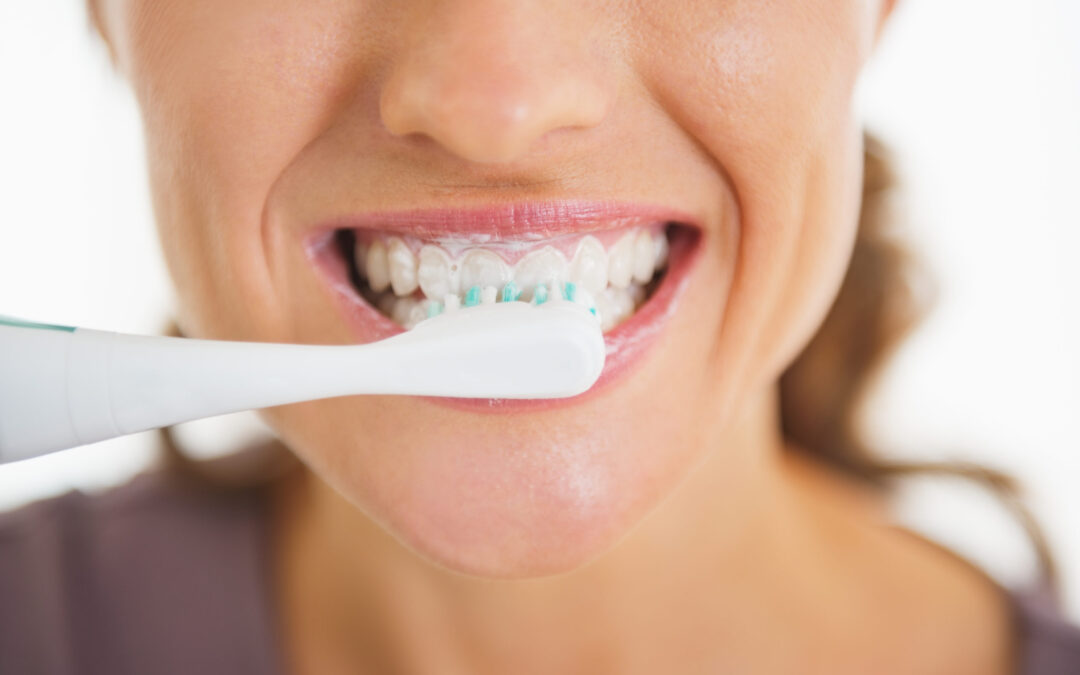
Is It Just Me, Or Is It Hard To Maintain Good Oral Health?
Why oral health is important
It’s no secret that good oral health is important. Not only does it help you maintain a healthy and beautiful smile, but it also prevents gum disease, tooth decay, and other serious health problems.
But despite its importance, keeping your mouth healthy can be tricky. Between sugary drinks, acidic foods, and the natural aging process, our teeth often take a beating. And if you’re not careful, those small problems can turn into big ones.
That’s why it’s so important to be proactive about your oral health. Brushing twice a day, flossing daily, and visiting your dentist regularly are all key to keeping your smile shining bright.
The different types of dental care products available
There are a variety of dental care products available on the market, and it can be difficult to determine which ones are right for you. Here is a breakdown of the different types of dental care products:
-Toothpaste: There are many different types of toothpaste available, and it is important to choose one that is right for your needs. If you have sensitive teeth, there are toothpastes available that are designed to help with this issue. There are also toothpastes that whiten teeth, and those that contain fluoride to help protect against cavities.
-Toothbrush: There are many different types of toothbrushes available, and it is important to choose one that is comfortable for you to use. Electric toothbrushes can be a good option for those who have trouble brushing their teeth effectively.
-Floss: Flossing is an important part of oral health, and there are many different types of floss available. You should choose a type of floss that is comfortable for you to use, and that will reach all areas of your mouth easily.
-Mouthwash: Mouthwashes can help to remove food particles and bacteria from your mouth, and they come in both alcohol-based and non-alcohol-based varieties. It is important to choose a mouthwash that is right for your needs.
Which state has the best dental care?
There are many factors to consider when determining which state has the best dental care. Some states have more dentists per capita than others, while some have more access to dental insurance. However, one study found that the state of Michigan had the best dental care in the nation.
The study, conducted by the Pew Charitable Trusts, looked at a number of factors to determine which states had the best and worst dental care. These included rates of tooth decay, access to dental insurance and dentists, and quality of dental care. Michigan was found to be the best state for dental care, while Mississippi was found to be the worst.
Common Cosmetic Dental Problems
There are a few common cosmetic dental problems that can arise no matter how well you take care of your teeth. Here are a few of the most common problems and how to fix them.
Yellowing Teeth: Over time, teeth will naturally yellow. This can be caused by food, drink, smoking, and certain medications. There are a few ways to combat yellowing teeth including whitening toothpaste, whitening strips, and professional teeth whitening.
Stained Teeth: Stained teeth are often the result of drinking coffee, tea, or red wine. They can also be caused by smoking or certain medications. The best way to avoid stained teeth is to brush after every meal and avoid foods and drinks that cause staining. If you do have stained teeth, there are a few ways to get rid of the stains including professional teeth whitening and at-home whitening kits.
Crooked Teeth: Crooked teeth are often the result of genetics but can also be caused by injury or thumb sucking as a child. There are a few options for correcting crooked teeth including braces, clear aligners, and veneers.
Gaps in Teeth: Gaps in between the teeth can occur for a number of reasons including genetics, injury, gum disease, or tooth loss. Gaps can be corrected with bonding, veneers, or implants depending on the severity of the gap and also dental veneers help correct many cosmetic dental issues.
Missing Teeth: Missing teeth can occur for a variety of reasons, including tooth decay, gum disease, or injury. Dental implants or bridges can be used to replace missing teeth and restore your smile.
Lastly, if you have bad breath, you may want to consult with your dentist about possible causes and treatment options.
How to maintain good oral health
It is important to maintain good oral health for many reasons. The mouth is the gateway to the body, and what goes into the mouth can affect the whole body. Additionally, good oral health can improve self-esteem and confidence.
There are a few simple things that everyone can do to maintain good oral health. First, brush your teeth at least twice a day with a toothpaste that contains fluoride. Fluoride helps to prevent tooth decay bystrengthening tooth enamel. In addition to brushing, flossing daily is also important in order to remove plaque and bacteria from between the teeth and along the gum line. Lastly, visit your dentist regularly for professional cleanings and checkups.
By following these simple tips, you can maintain good oral health and avoid common dental problems such as tooth decay, gum disease, and bad breath.
How to find a good dentist
It can be difficult to find a good dentist, especially if you have moved to a new area or your old dentist has retired. Here are some tips on how to find a good dentist:
-Ask your friends, family, and co-workers for recommendations. They may know of a good dentist in the area.
-Check with your local dental society. They may have a list of recommended dentists in the area.
-Call around to different dental offices and ask about their services and fees. You can also ask if they accept your insurance plan.
-Read online reviews of local dentists. This can give you an idea of what other people have experienced at the office.
-Once you’ve found a few potential dentists, make sure to schedule a consultation appointment so you can meet them in person and get a feel for their bedside manner.
The importance of flossing
The importance of flossing cannot be understated. Flossing removes plaque and bacteria from between your teeth and along your gumline – areas that brushing alone cannot reach. A build-up of plaque can lead to tooth decay and gum disease, both of which can have serious consequences for your oral health.
Flossing is quick and easy to do, and it only takes a few minutes out of your day. There’s no excuse not to do it! So make sure you add flossing to your daily oral care routine – your teeth will thank you for it.
Conclusion
Looking after your oral health can be tough, especially if you’re not used to it. However, it’s important to do what you can to maintain good oral hygiene. With a little effort, you can keep your mouth healthy and avoid problems down the line. Thanks for reading!

Saving Planet Earth From Human-Generated Mass Extinction
By Suze Wyhldher
It seems we think of energy efficiency is a singular pursuit: one that involves ourselves, community, our family, our workplace. That there is a grassroots basis from the groundswell of taking responsibility for the human ruin we have made of our planet. A planet that now deals with 100 times the impact of us as a species over the last 20 years for a global population 8 billion. In that same time period, the International Union for the Conservation of Nature (IUCN) has declared 41,000 plants and animals as endangered.
That’s 28% of just the species already assessed. We have driven 75 mammal, 335 bird, 41 reptile and 65 amphibian species in tropical and subtropical regions to the brink of extinction in just two decades.
That’s not counting the flora and fauna completely and forever wiped out, as a direct result of overwhelming human impact over the last 100 years.
Whatever the accepted demarcation of climate change, and how much of it is a planetary pattern, humankind is not kind, and not blameless.
Not by a long shot. It’s the perfect climate storm when the high-pressure front of consumerism and the warm breeze of nature meet head-on. There have been five previous major extinction events as the result of catastrophic occurrences – like volcanic eruptions, asteroid impact, extreme temperature variations and changing sea levels. Each time, an estimated 70-90% of life on Earth failed to exist.
The sixth mass extinction is happening right now and it’s a crisis predominantly created by humans. Global destruction and fragmentation of habitat, crop and marine overharvesting, over fertilising, the illegal flora and fauna trade, the impact of introduced, and genetically modified species; water, air and soil pollution, climate disruption and an increase of pathogens.
Human activity has always resulted in environmental reformations, but over the last century they have been substantially large-scale. Ecologists and evolutionary biologists are increasingly aware that like any organism, pathogens and parasites evolve with anthropogenic change. There are complex links between the environment, human expansion and parasite development. Across the empirical and theoretical, humans directly and indirectly influence the specificity, virulence and polymorphism in parasites. These influencing factors are as diverse as biodiversity loss, habitat desolation, multi-dimensional pollutants, vaccines and antibiotics, climate change, species’ introduction, and an ageing and medicated worldwide population.
Understanding how parasites evolve in response to anthropogenic interference is the cornerstone of conservation biology.
As of 2022, of the some 41,000 plant and animal species assessed by the IUCN, more than 16,000 have been declared endangered. Experts agree that animals are going extinct at historical rates due mostly to human interference and an unbalanced increase in world population. 74% live in middle-income countries, 17% in the First World and 10% inhabit impencunious nations. This increase in food demand and production obviously requires a broadening of deforestation, a rise in development, proliferating pollution, and an overburdening of ecosystems – with few resounding solutions on a hastening timeline.
Current estimates say species are reaching extinction up to 1,000 times the rate prior to human existence.
Which of course makes sense. It was the transition of Homo sapiens from a nomadic to agricultural life that slapped the mark of mankind across the face of the Earth. It was only 12,000 years ago that we were hunter-gatherers in a world where possessions were limited by what we could carry, and mobility was a survival strategy. Certainly the hunter-gatherer way of life necessitated access to large areas of land in order to find enough in volume and variety of foods – up to 800 square kilometres. Nomads ranged from extended family, to larger groups. Never numbering more than approximately a hundred people, stayed for a few days, weeks and up to six months, reading and sweeping the territory they were in for water supplies, edible plants and game animals. Undoubtedly apex predators, the arrogant destructiveness of modern humankind and its inexorable reach is the cultivation of the the weaponry, hunting tactics and prowess of Paleolithic and Neolithic man.
Like the perpetual miasma that is Charles Shultz’s Pig-Pen, is how mankind has moved through the world for the last 200 years, with the catastrophe of trophic cascades particularly intense over the last fifty. These complex effects disrupt all levels of the ecosystem. When Arctic foxes were introduced to sub-Arctic islands, their abundant seabird diet turned grassland to tundra. Shipping and its ocean pollution’s reduction in sperm whale populations leaves the large squid happily proliferating.
Release the Kraken …
Although we’ve only actually explored 5% of the oceans we’ve managed to pollute 88% of it, with 80% of that being plastic. By 2050 plastic will likely outweigh all the fish in the sea.
Surely by now, the more enlightened definition of humans is the unique super-alpha predator because of our ruthless ‘hunting’ practices. Typically, we take out adult fish populations at 14 times the rate of self-predation.
Year after year 3 trillion fish are hauled from the ocean. Obviously this is far too many and doesn’t count the trillions in bycatch – a word that makes makes the needless slaughter of marine life sound such a casual thing. Should you wonder why fish populations have collapsed worldwide, 300 million annual filet-o-fish purchases worldwide is the tip of the fast-melting iceberg.
And it’s not the only thing we’re doing to fishies in the deep blue sea for the joy to you and me.
By such vast number killings, we exert enormous evolutionary selection pressure. Preferentially catching the fish we like – big ones – we inevitably engineer a critically adverse situation for those fish. Diminished species are less likely to survive, severing breeding lines and effectively creating evolutionary coding for fish to be small.
Aside from the inhumane overfishing of 90% of world fish stocks, 50 million tonnes of that a year is dumped right back into the ocean, and about 35% of catches never making it to the plate. Universal policies that dictate only larger-rather-than-smaller fish can legally be caught, is counterproductive to anything reasonably sustainable or logical.
Fundamentally, apex predators don’t take down adult prey. Juveniles are most vulnerable to attack, and mature animals are left to breed again.
What makes us super predators is our ability to tackle adult prey at minimal cost – all for maximum, short-term gain. Advances in killing technology excuses humans from the formerly dangerous act of predation by the way we now ‘capture’ caged and coralled mammals with bullets and stun guns, and fish with kilometres-long nets. It’s ‘minimal risk carnivoring’ compared to apex carnivores that are often injured and hungry, living what amounts to a dangerous existence.
We took the danger out, and put it into both illicit and legal drugs, long-term poverty, traumatic lifestyles and considering thy neighbour as thine enemy; such is the scrape and scramble for monetary gain in the pursuit of unhappiness.
As predators finding we no longer have any, amid our general disregard for the rest of the planet we turn against ourselves.
Geological eras are periods comprising all the rocks formed during that time, allowing us to study the different stages through which the planet has passed in its 4.5-billion-year existence.
Such is our current negative stamp on the environment it is described by some scientists as a new geological age: the Anthropocene. Add that to the Cenozoic, Mesozoic and Palaeozoic.
Pre-industrially – and again, most specifically since the second half of the last century – changes in climate activity and the trumped up requirements of humans and consequent behaviour have increased the rate of utter environmental degradation to a velocity never seen during any other period in history.
Including much, much longer ones.
Largely, the stance we adopt is not shamefaced but rather shameless and blameless, while making a lot of noise about what’s possible as we continue on our merry malfeasant way. For an inordinate amount of time.
As usual.
We haven’t even cracked equal pay in more than fifty years, and Indigenous voices remain silenced across the planet. For all our technology, AI and scientific superiority, we remain tediously barbaric and addicted to everything unworthy.
At the moment, we’re upset about imperilled ketchup and mustard supplies because of pandemic shortages, harsh weather in western Canada and floods in Western Europe. Ice cream supply is down 1.7% and we had to publish that. Three billion mammals, reptiles, birds and frogs were killed or displaced in just the Australian 2020 fires, and nobody much talks about that.
What we do talk about quite a lot is the future. Depending on where you live and how you spend your intellectual time depends on the info and the outlook you’ll get: surrealistically bleak; or a muskily seductive hallway tour of the cybernetic collective. Focussing on the future does indeed take the mind from this torpid present, and who has time to go wading into the past when nothing is archived anymore anyway.
It’s difficult to know what we learn from the past when we spend so time denying, hiding, or running away from it – the thing you can never do, apparently.
We don’t even much learn from the present.
If we did, there’d be more than just four countries in the world ranked as the most energy efficient – every country would be. For the sake of the planet. To that end, richer countries would help poorer ones; not to own them, but to own the planetary damage done in unconditional reparation.
I know. That’s blown-circuit kind of thinking.
Whether the idea and the implementation of 21st century energy efficiency is a tail-eating dragon. or an elephantine unburdening of our Earth one bite at a time, France, the UK, the Netherlands and Germany are the best at it.
It’s hard to know exactly how that’s accorded; France gets around 20% of its power needs from renewable sources – 8% from wind, and needing more to meet its climate goals. 74.5% is nuclear, 16.3% hydro-electric, 9.1% thermal, with wind power and other renewable sources at 0.1%. The war in Ukraine and disruptions in its conventional electricity generation fleet have France’s energy system under stress.
As a success strategy it’s open to debate, but them there’s the facts.
Germany is transitioning from atomic and fossil fuel energy to renewables. It’s a change that doesn’t come cheaply – funded by levies and taxes. Energy efficiency is an uncomfortable fence on which to sit however you straddle it.
Nowhere even in the Top 10, the Petrostate of Venezuela uses almost 30% renewables.
Or so it says amid all the chaos.
The Earth Science Division of NASA includes data on sunlight, temperature, wind and precipitation for a long-term, global view of the key elements of how our planet works. It’s information that’s put to use by pinpointing renewable energy sites, and improving the energy efficiency of buildings. Its Prediction of the Worldwide Energy Resources (POWER) project avails NASA data to sustainability specialists and decision makers all over the world, whether for schools, private companies, developers, or the building or altering of someone’s home.
It’s pretty much already too late to save our over-populated planet – but maybe if we actually find consensus one day, even if in 200 years, we might give ourselves, and our children’s children’s children, an extra millennium to debate this matter a little more fervently.

